| |||||||
| Search Forums |
| Advanced Search |
| Go to Page... |
 |
| Search this Thread |  5,306 views |
| | #1 | |
| Distinguished - BHPian  | Helicopter Museum | Bückeburg, Germany As I mentioned in this earlier thread, (https://www.team-bhp.com/forum/comme...on-museum.html (Visit to Hanover | Germany Aviation Museum)), Mrs. D had one of her costuming events). This one took place in Bad Nenndorf, but I spend the weekend in Hannover, where I visited the afore mentioned aviation museum. As luck would have it, at the aviation museum I also picked up a brochure about a helicopter museum in Bückeburg. Not too far from where I was staying and in fact very close to Bad Nenndorf. So I decided to go there and pick up Mrs. D afterwards. If you are into helicopters, as it so happens I also visited a helicopter museum in the UK recently too. (https://www.team-bhp.com/forum/trave...ml#post5409803 (England in a nutshell | Rolling hills, castles and helicopters!)) This is what the museum looks like from the outside. 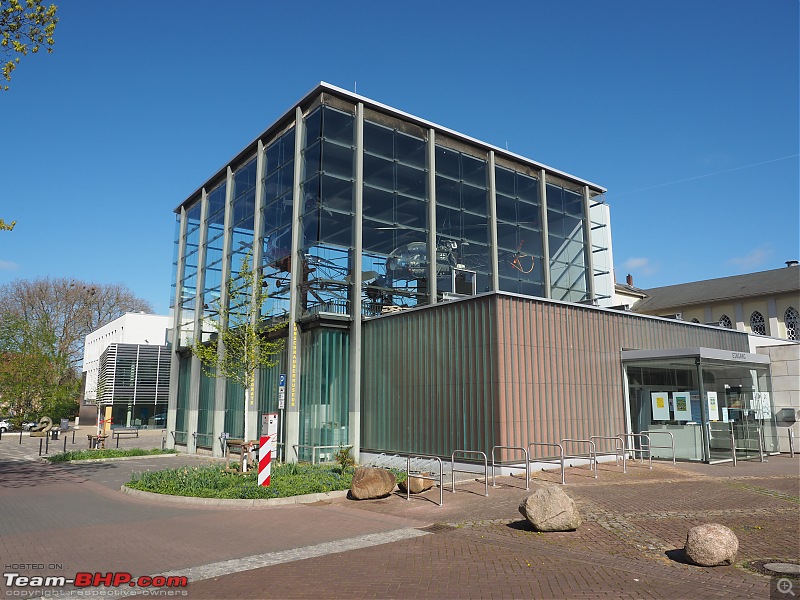 When I stepped inside and paid the entrance fee, I was a little disappointed as I thought the museum was pretty small. However, you make your way to another building and 95% of the collection is out there. At the entrance you will find a decently well stocked museum shop, there is the so called “voliere”, more about that later and a lot of helicopter models on display. 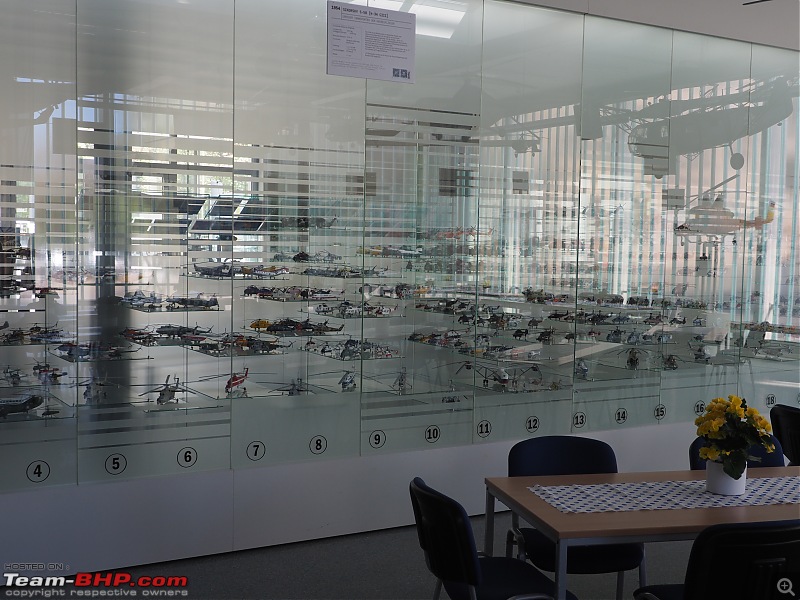 Way to many models to photograph all, so I made a selection of peculiar and interesting ones. 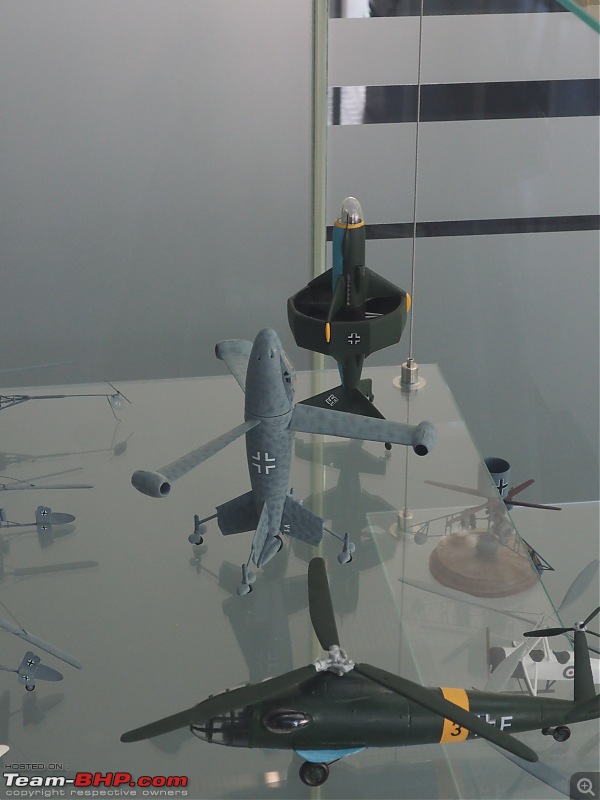 This is of course, a well known chopper, but it was nice to see various variants. 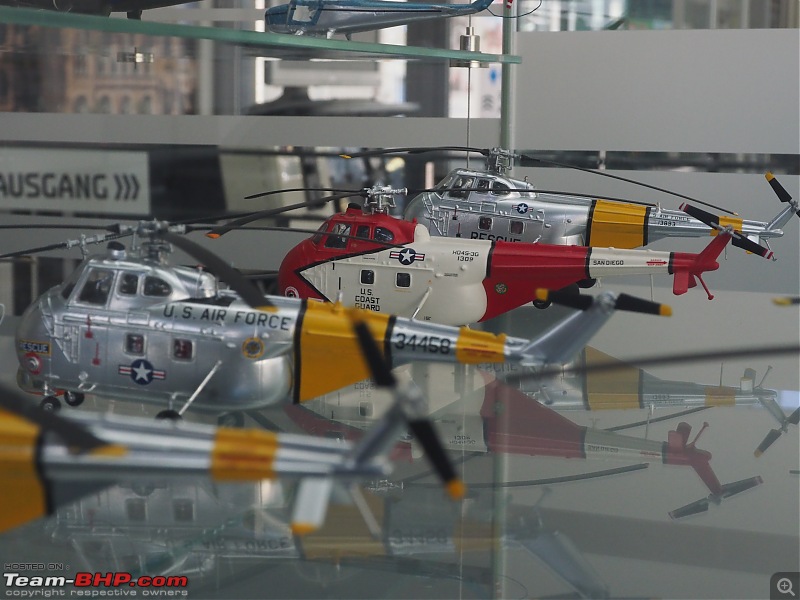 One helicopter I have never seen for real and never will, as none exist anymore. The helicopter museum in the UK had a few parts on display. And that is considerable more than most museums have: The Fairly Rotodyne. From Wikipedia: Quote:
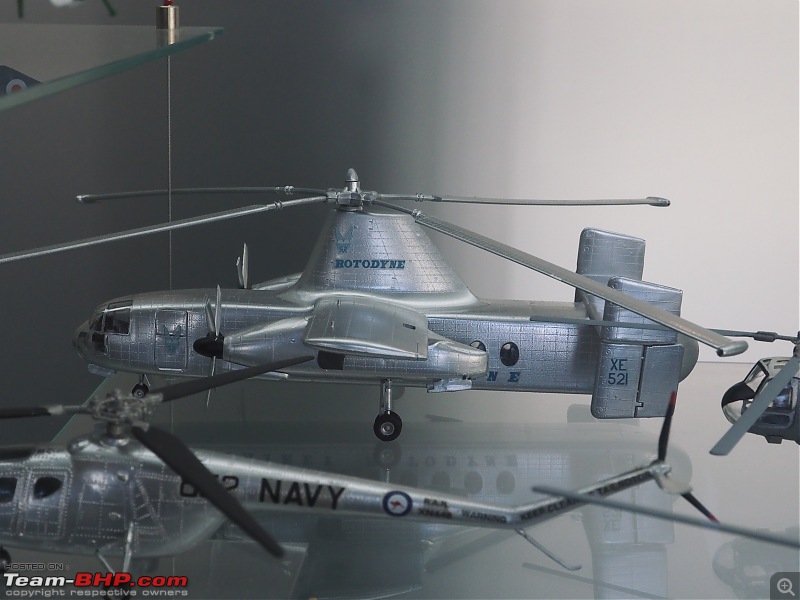 The famous Banana Helicopters! 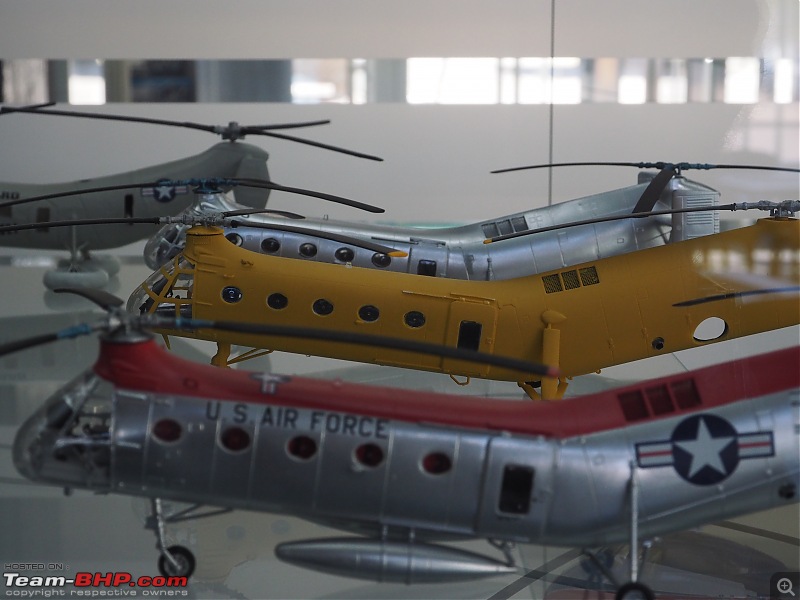 I was always fascinated by this model that has two interlocking rotors! As luck would have it, they had the real deal in this museum too. Stay tuned!  Never really caught on. 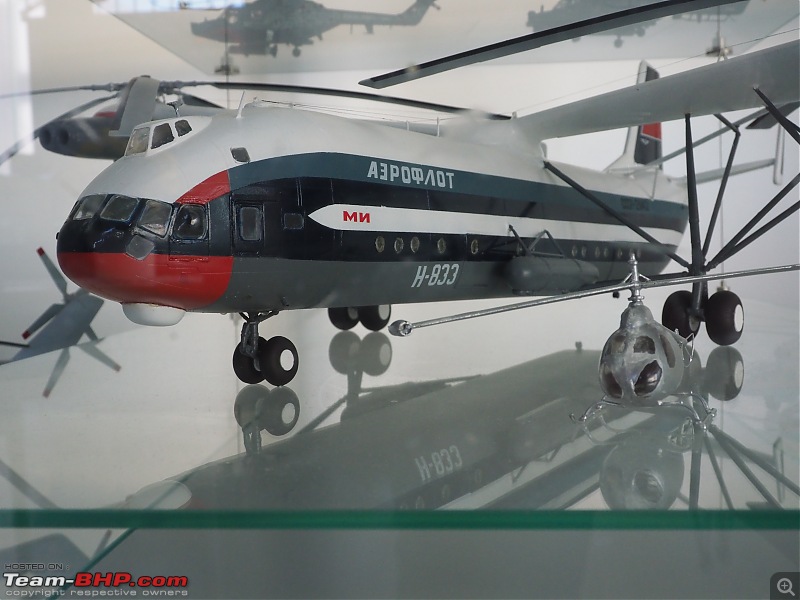 Of course, helicopters big difference over fixed wing aircraft is their ability to take off and land vertically. You can accomplish the same in different ways as these models demonstrate. 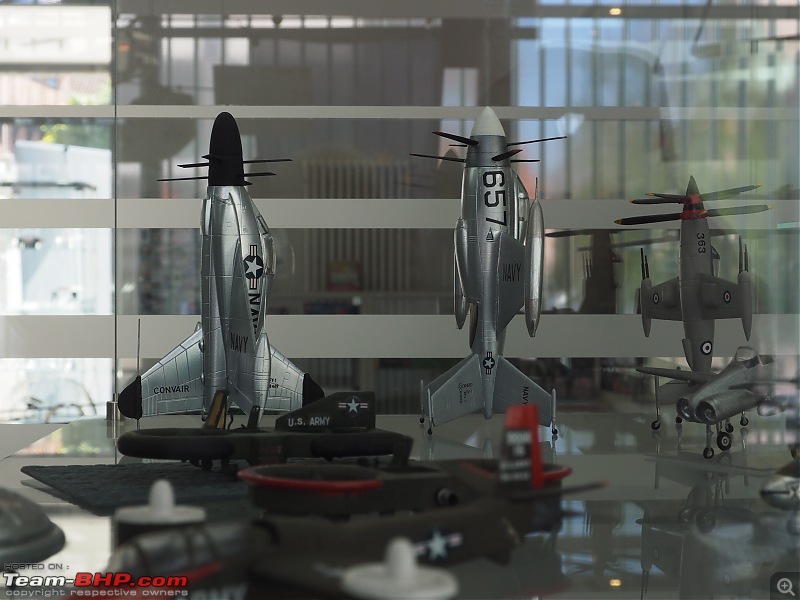 They also have a helicopter simulator. Unfortunately, it was not available that day. I would have liked to take it for a ride. I have flown on quite a few helicopters, always as passenger, but usually in the left hand seat next to the pilot. And many moons ago I had some helicopter flying lessons too. Very different from fixed wing flying! 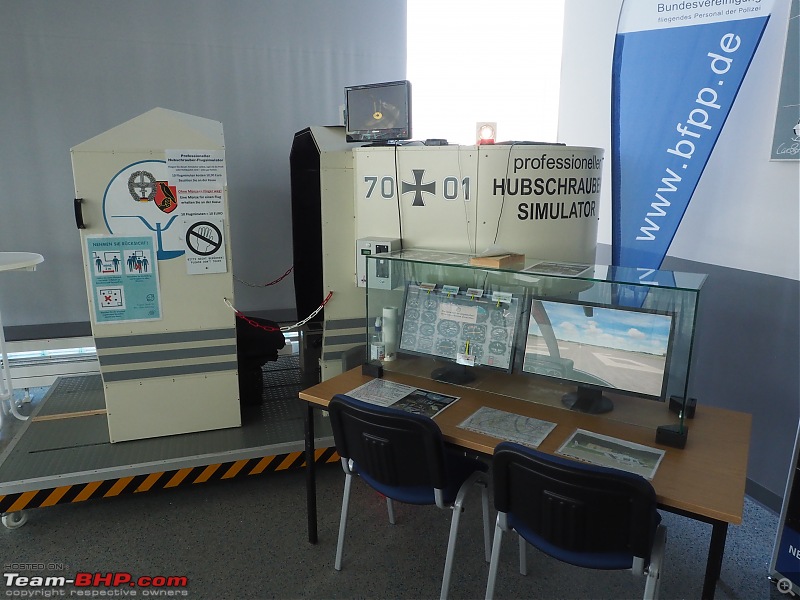 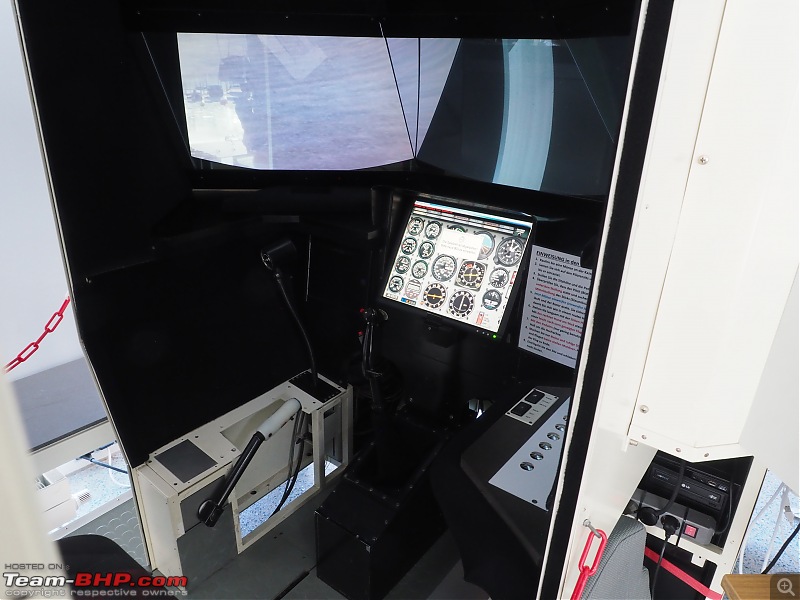 I left this part of the museum to make my way to the main exhibition. It starts with a nice overview of the very early helicopters. Although interesting I skipped through it to make my way to what I call some real helicopters!! 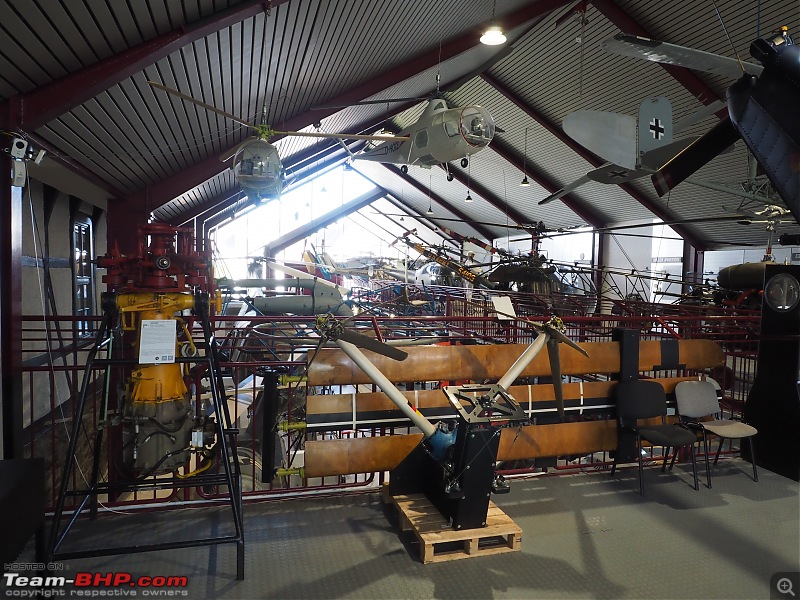 Lots of helicopters as you will see. This is the Bell Huey-10. Many people will associate this chopper with the Vietnam war. And various Vietnam War movies of course. I have actually flown in one of these. Somewhere of the coast near Mogadishu, Somalia, we were relieved from our ocean going tug, via an oil rig and brought ashore on a Huey. 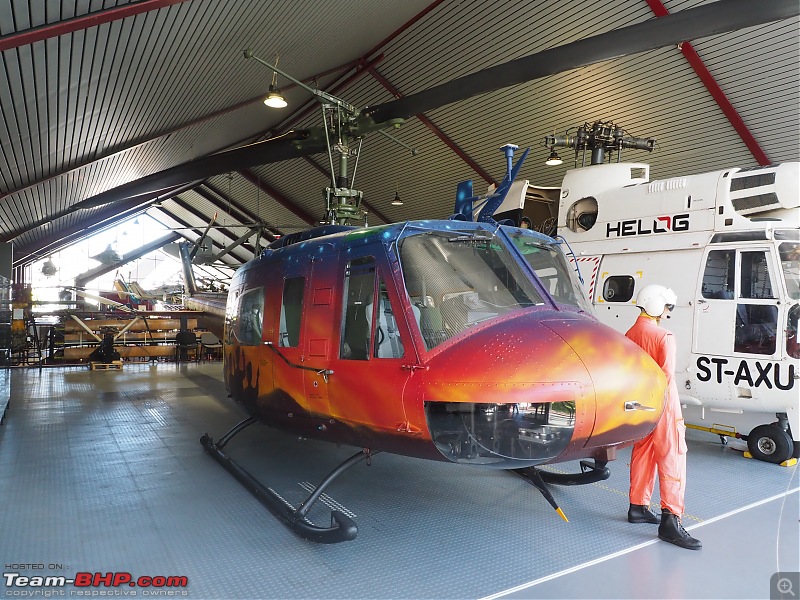 This is a pretty big helicopter and we have seen them in action all over Europe in various roles. The Aecospatiale SA 330 Puma. It was used in both civilian as military applications and was build under license in Romania as well. 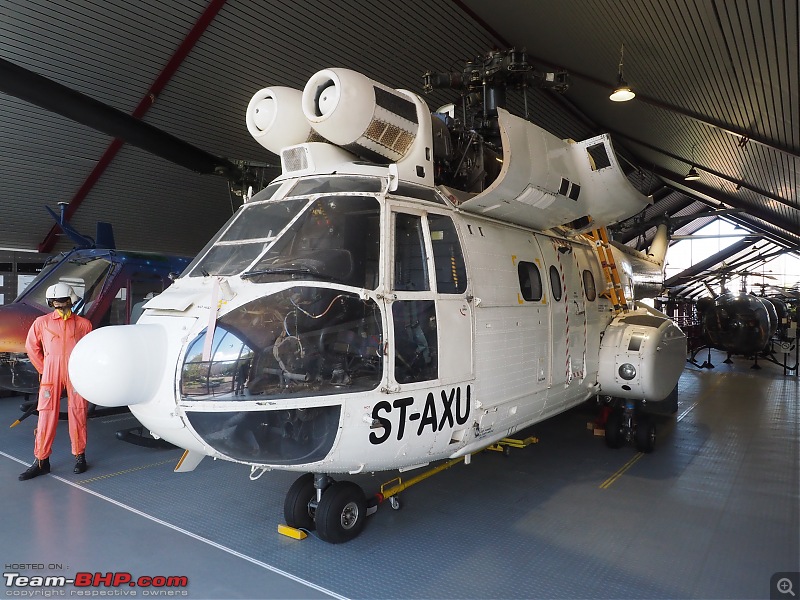 This was an interesting contraption. It will never ever fly, but it is/was used to demonstrate how you fly and control a helicopter. 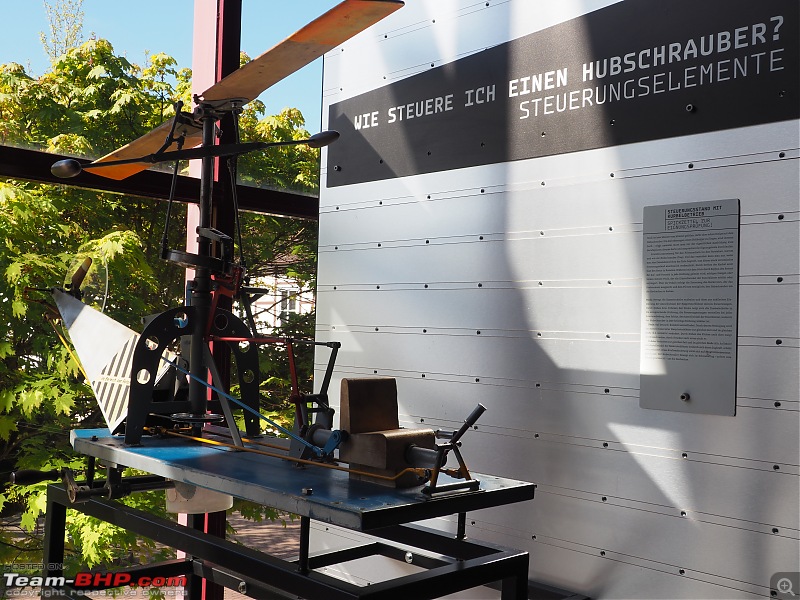 As you would expect at an helicopter museum, lots of helicopter parts that you can study up close. I must admit, the rotor assembly of a helicopter never ceases to amaze me! 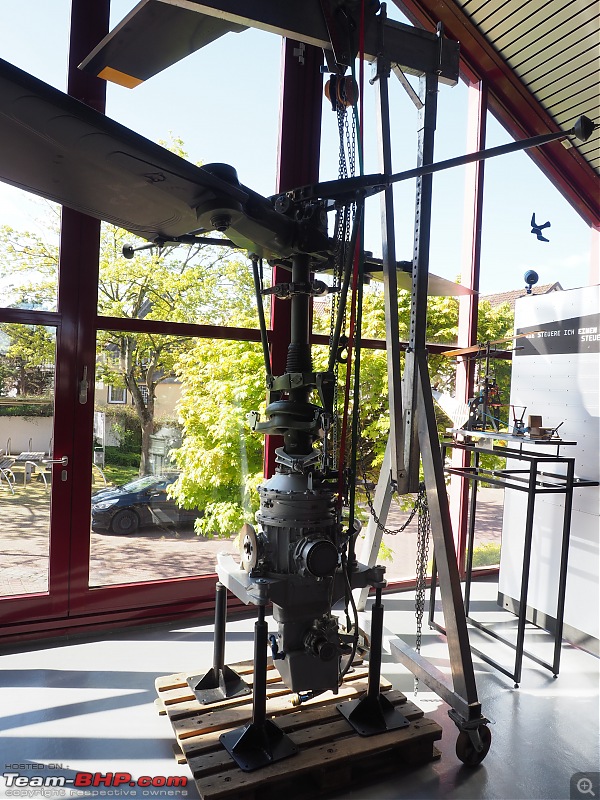 | |
| |  (17)
Thanks (17)
Thanks
 |
| The following 17 BHPians Thank Jeroen for this useful post: | darklord, DiMaGo, directinjection, Foxbat, GTO, keroo1099, raptor_diwan, Sen, skanchan95, sudipta, the_skyliner, Tucker48, V.Narayan, Vishal.R, Voodooblaster, whitewing, ysjoy |
| |
| | #2 | |
| Distinguished - BHPian  | re: Helicopter Museum | Bückeburg, Germany Walking past the Huey and the Puma, this is the sight that greets you. Helicopters galore!! 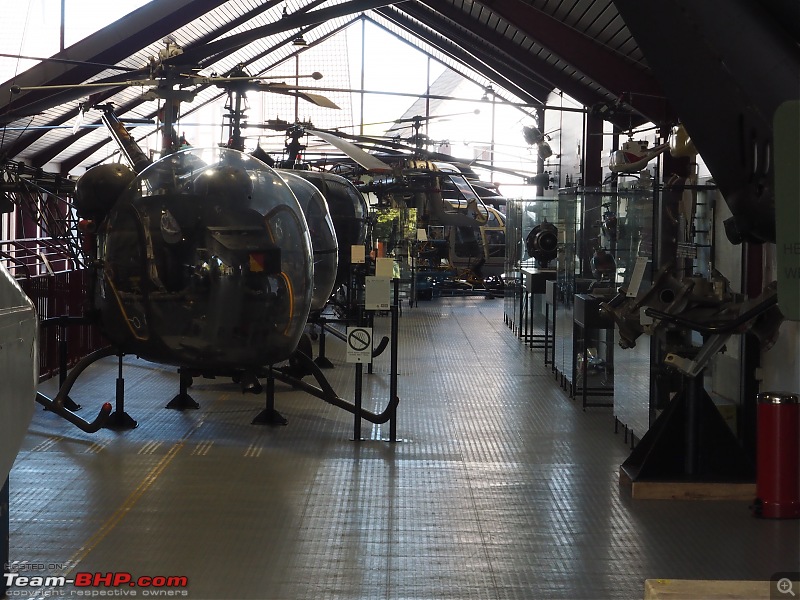 More helicopter parts for me to ponder over, love it! 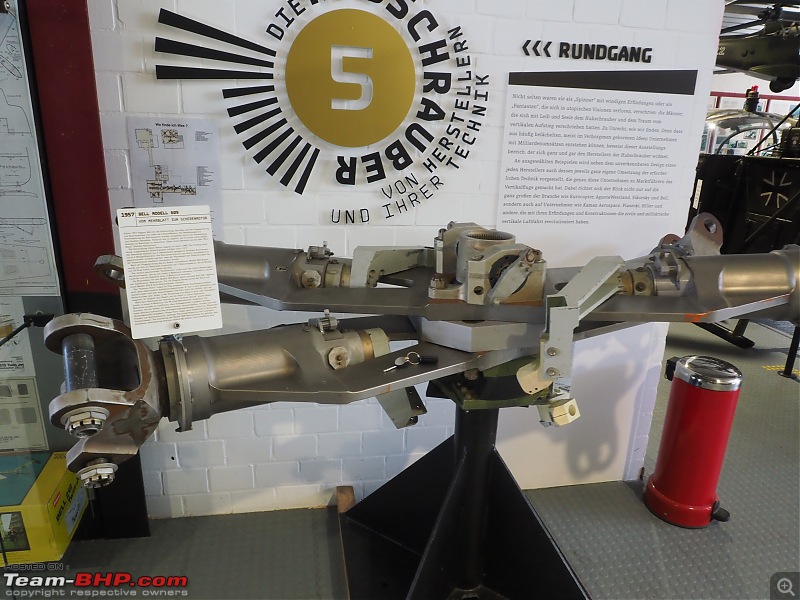 This little chopper is the Bell 47G-2 Sioux. 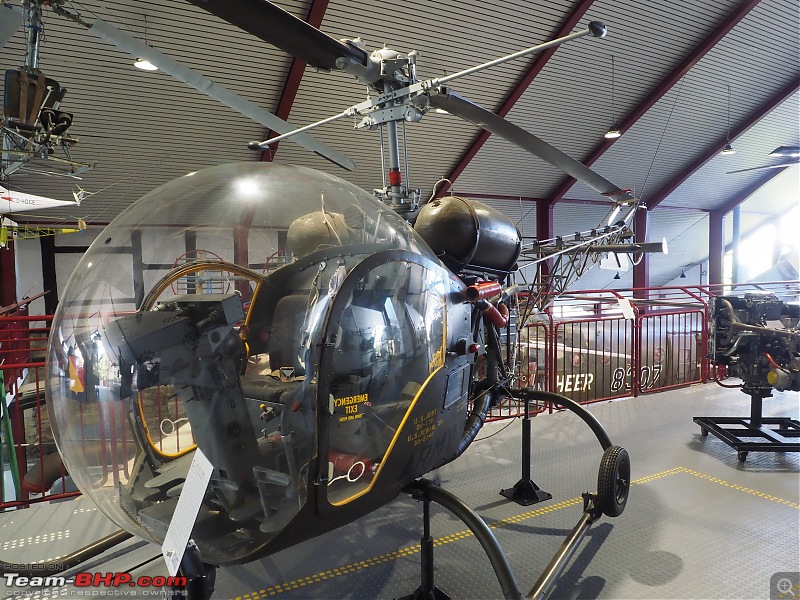 Believe it or not, but first flight of this amazing little machine was 1945! It is also the very first helicopter certified for civilian use, in 1946! Next, the Hiller H-23, Raven. An early multipurpose light weight helicopter introduced in the 1946. It saw extensive action in the Korea war. 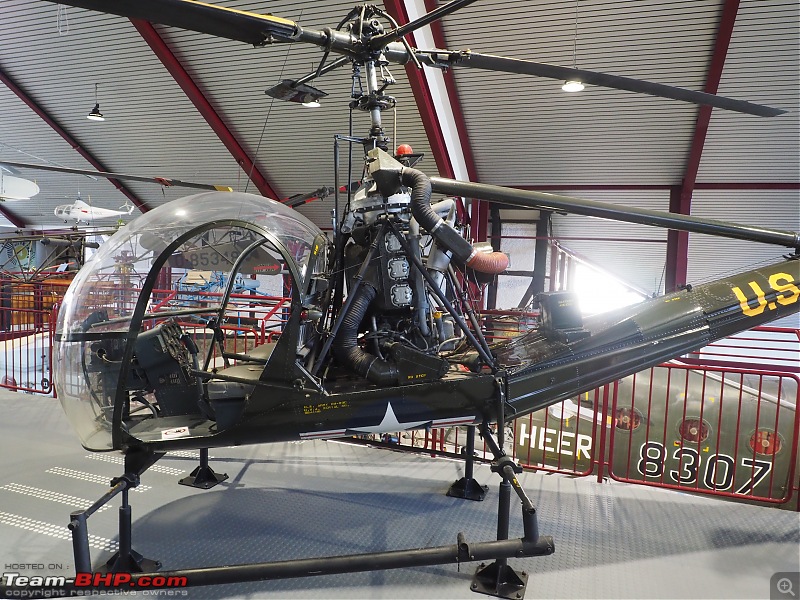 Very simple and straightforward cockpit on the Raven. 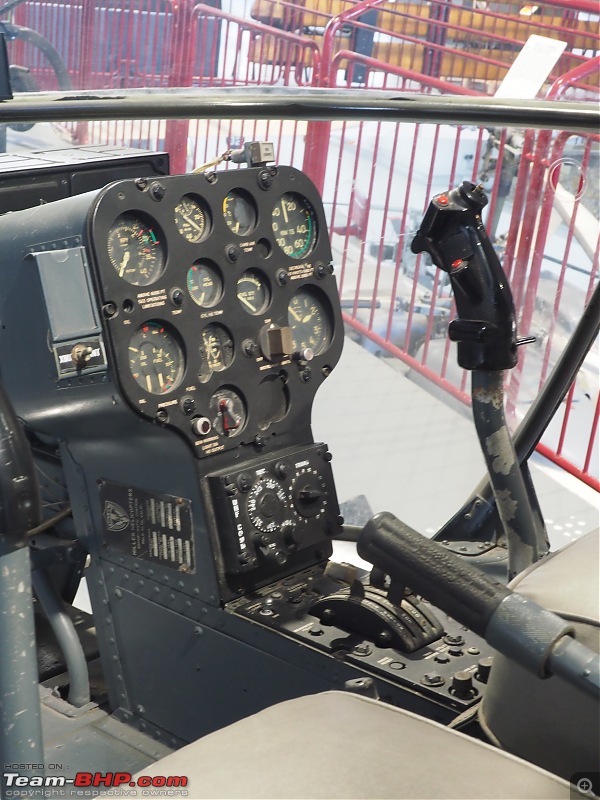 And now for something completely different: The Hiller Flying platform!! From Wikipedia Quote:
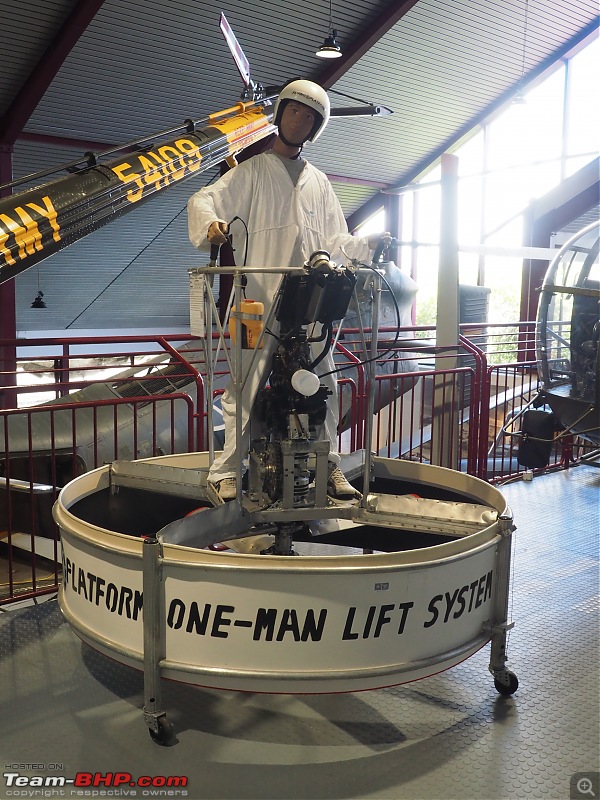 A helicopter museum would not be complete without an Aerospatiale Alouette III. Notice the snow skis attached to the wheels! I wrote about my visit to the Dutch Alouette museum recently. (https://www.team-bhp.com/forum/comme...ml#post5527304 (The Alouette - a great little helicopter!)) 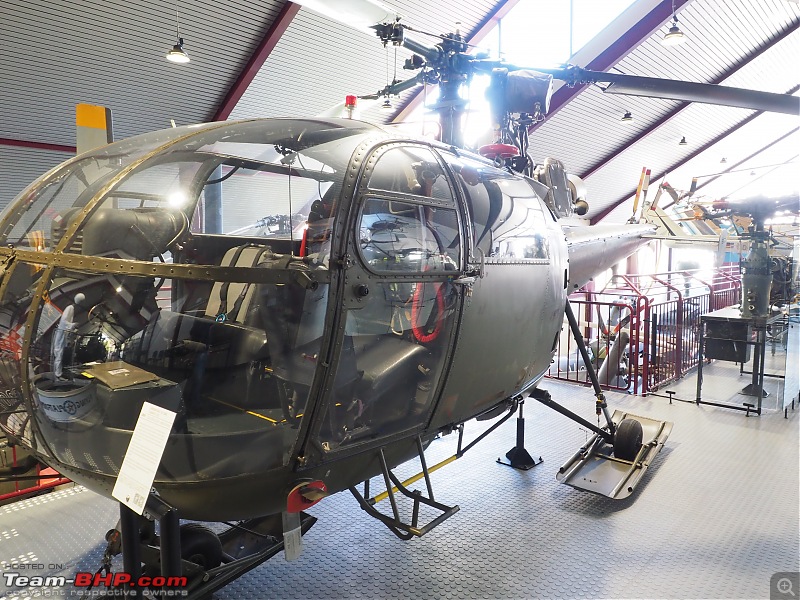 Just for reference, opposite the Alouette III they also had this model of the Alouette II. Spot the differences! 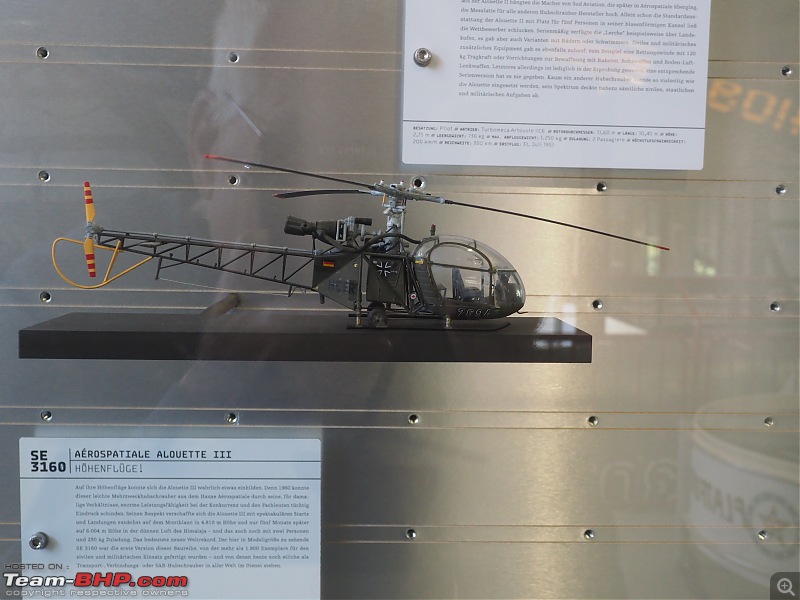 Another interesting set up of the Alouette complete drive train, cut away! Yours truly being very nerdy in the reflections. Mrs. D never gets why I take images of cut open machinery. Well, every men needs a hobby I guess! 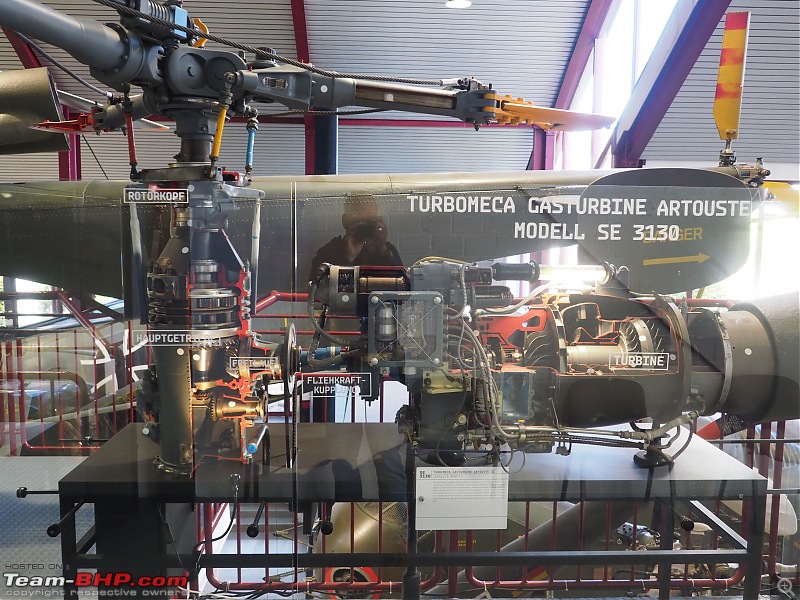 Nice line up 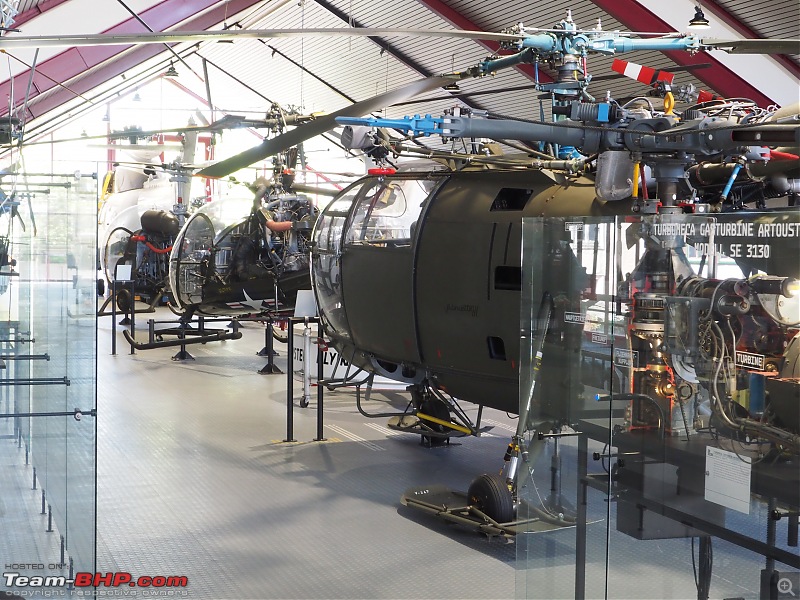 Next we move to a different floor of the museum. This is the Bölkow Bo 102 Helitrainer. Sorry, not a very good image, but it is suspended is a sort of rig. It was designed to be mounted on a swivelling captive rig. The Bo 102 allowed trainee pilots to practise procedures such as engine starting, rotor engagement and manipulation of the flight controls. Many of the Bo 102's components, including the single-bladed fibre-glass main rotor were used in the company's next design, the Bo 103. 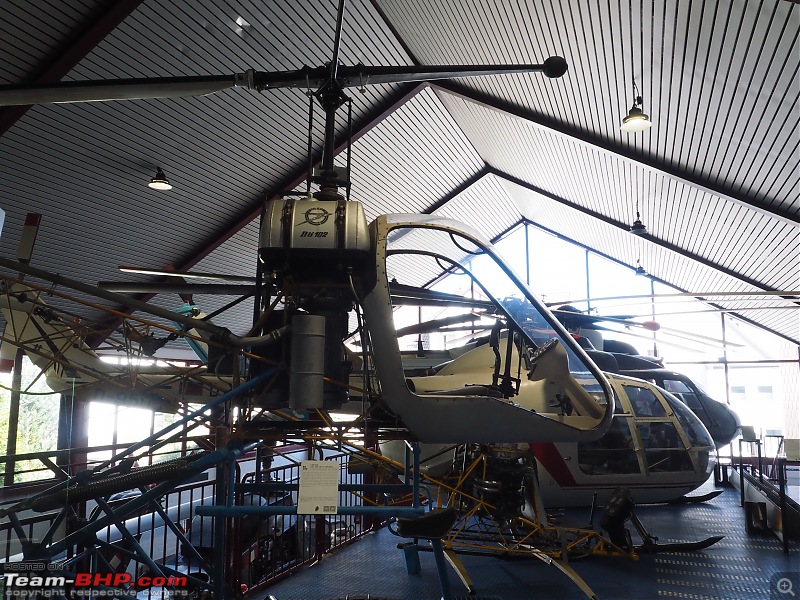 And here it is the Bo 103! It was an ultralight experimental design (can you tell?). Many parts and its design were carried over from the Bo 102. But the Bo 103 was capable of independent flight. In the end, the German army was not interested and the project was stopped. This is the only one made, fully restored by the museum. 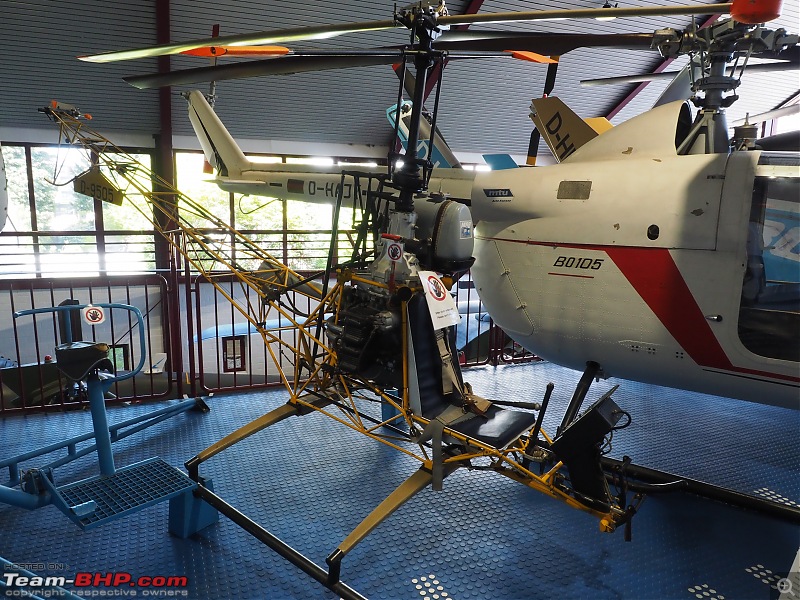 Next Bölkow, the Bo 105 together with some other choppers. It was the first light twin-engine helicopter in the world, and the first rotorcraft that could perform aerobatic maneuvers such as inverted loops. The Bo 105 features a revolutionary hingeless rotor system, a pioneering innovation in helicopters when it was introduced into service in 1970. Production of the Bo 105 began at the then-recently merged Messerschmitt-Bölkow-Blohm (MBB). So technically it is know as the MBB Bo 105. It flew in many roles all over the world as was license build in Canada too. 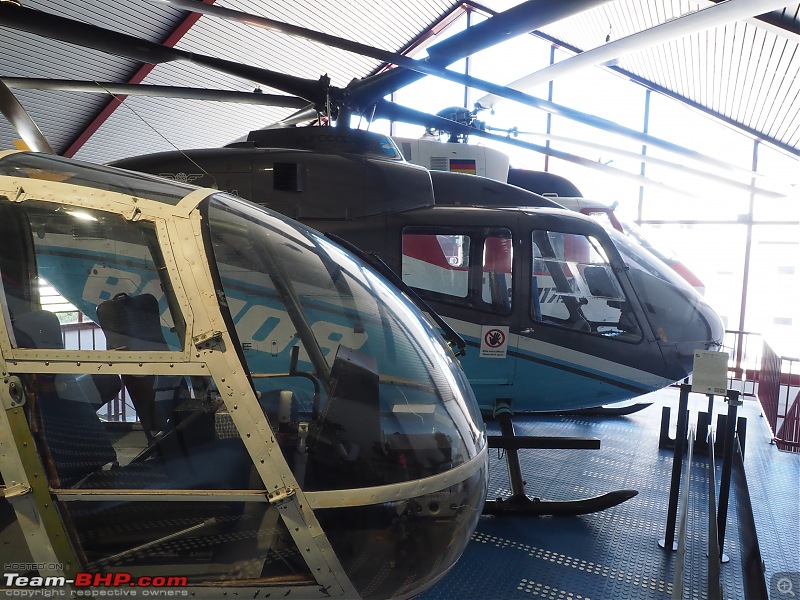 MBB and Kawasaki joined forces to produces this MBB Kawasaki BK 117 in the late 70s. It was produced in both Germany and Japan, to accommodate for region specific features. It was a popular passenger helicopter, shuttling VIPs and others around. 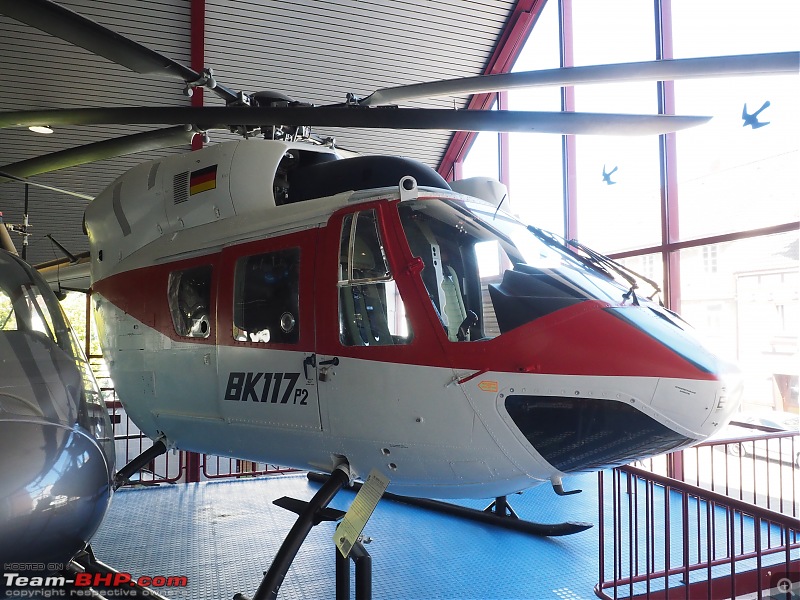 Same helicopters from a different angle 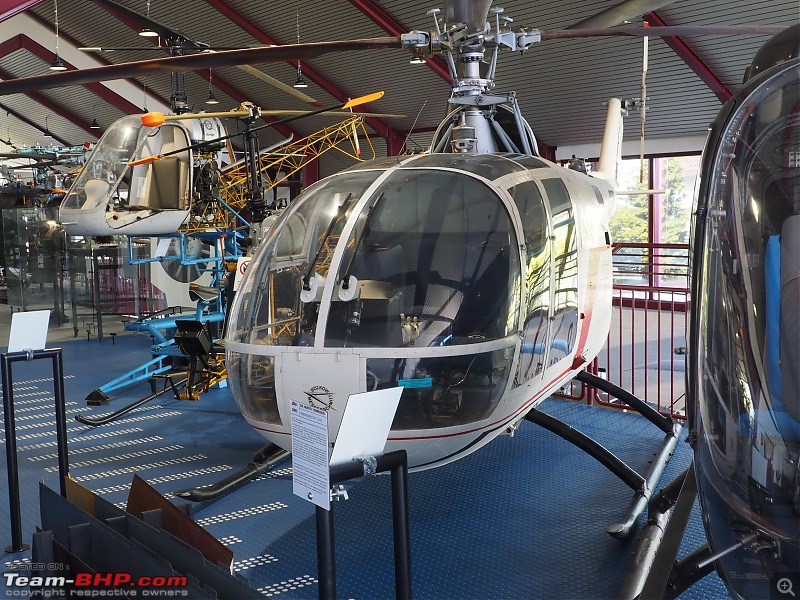 The 1957 Saunders Roe “Skeeter”. It flew with the German and British forces in the early 60s as a trainer and scout. 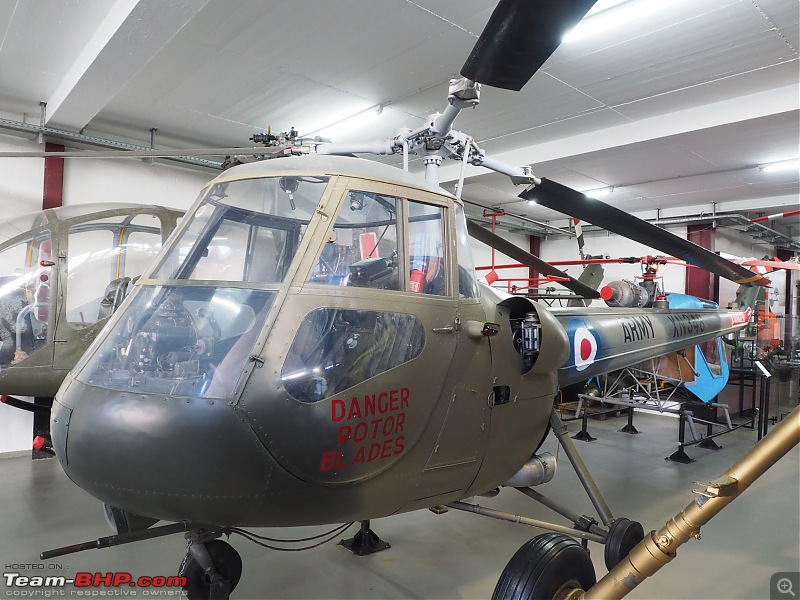 | |
| |  (13)
Thanks (13)
Thanks
 |
| The following 13 BHPians Thank Jeroen for this useful post: | darklord, DiMaGo, GTO, keroo1099, raptor_diwan, Sen, skanchan95, sudipta, the_skyliner, Tucker48, V.Narayan, Vishal.R, Voodooblaster |
| | #3 |
| Distinguished - BHPian  | re: Helicopter Museum | Bückeburg, Germany Now onto some more serious, if not to say, menacing looking, helicopters. The Eurocopter Tiger. Obviously, when you look like this, your role is Attack chopper! 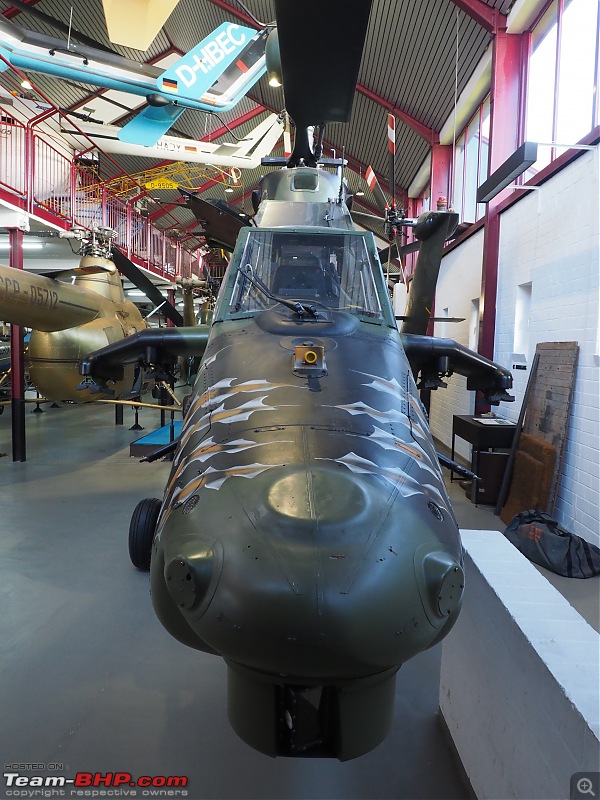 Of course, the Tiger was made wold famous in the James Bond Movie GoldonEye. (https://jamesbond.fandom.com/wiki/Eurocopter_Tiger) But truth be told, it is quite the machine. Four blade, twin engine attack helicopter, capable of various other roles too. Perhaps the most significant single avionics system fitted upon the Tiger is the mast-mounted Osiris sight/sensor; this incorporates optical TV and thermal cameras, a laser range finder/tracker/designator, and multiple gyroscopes for stabilisation. Osiris performs as the main sensor for target observation and acquisition, providing firing and targeting data via the weapons computer; Osiris also enables entirely passive target acquisition to be undertaken and was developed to maximise the capabilities of the Trigat anti-tank missile developed in parallel to the Tiger itself. 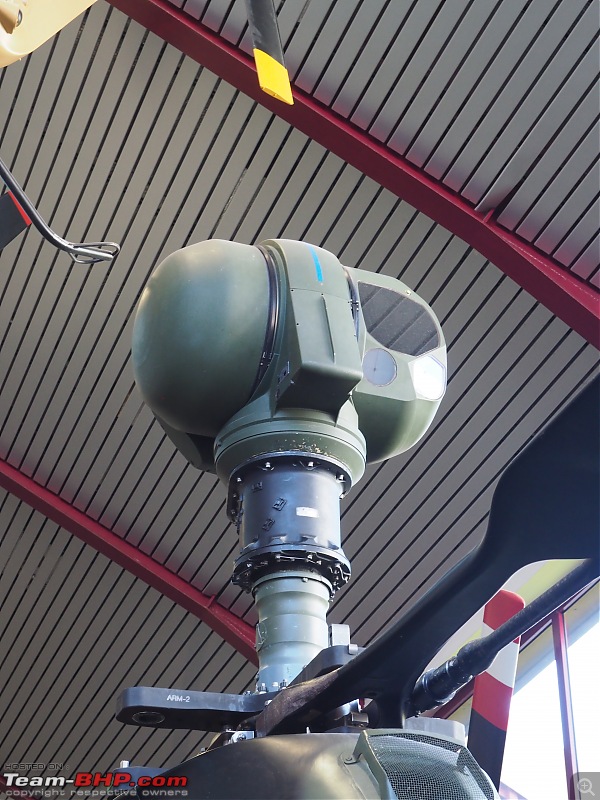 Close up of the Tiger engine room. 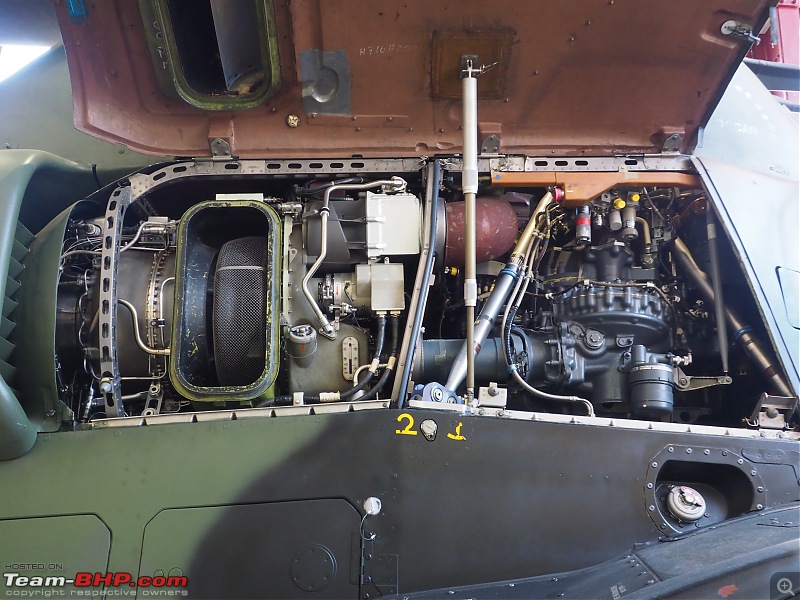 Very different, admittedly from a very different era too, the MIL MI-1 Hare. A Russian light utility chopper. It was, apparently, the first Russian chopper to enter serial production, with well over 1000 units build. Entered service in 1951 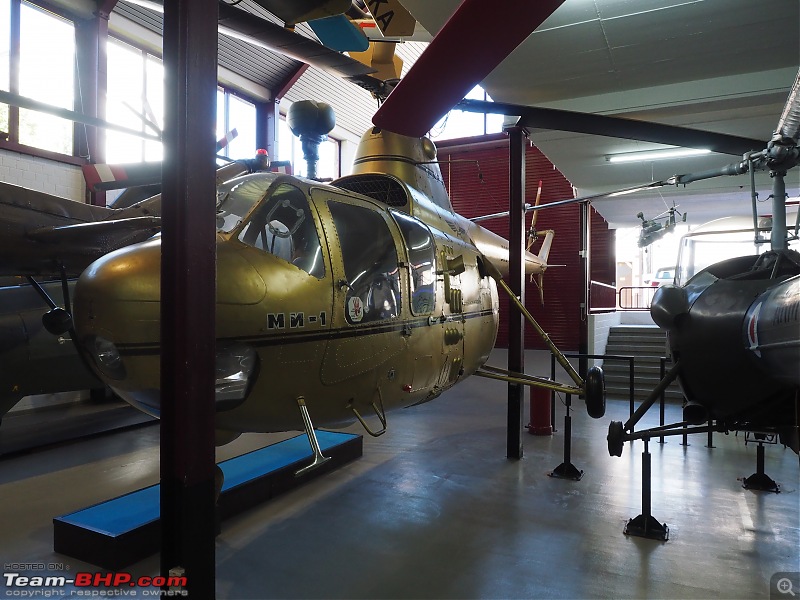 It is powered by one 575 hp (429 kW) Ivchenko AI-26V radial piston engine. Jet turbine are much more powerful, but radial piston engine look much more impressive.  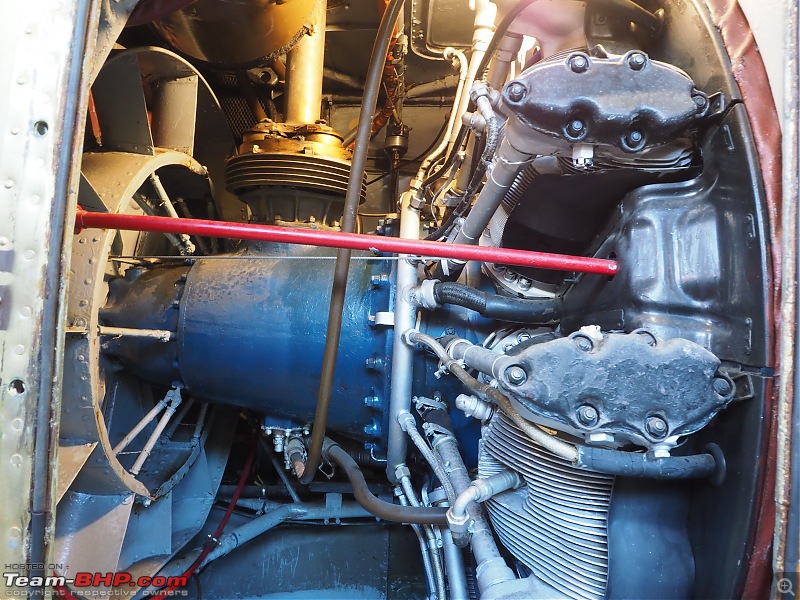 Most (all?) Russian aircraft make use of this green/blue turquoise paint. There are several stories on the relevance of this. Something to do with less stressful, easier on the eyes. But it still remains a Russian thing. Never seen this colour inside a western cockpit. 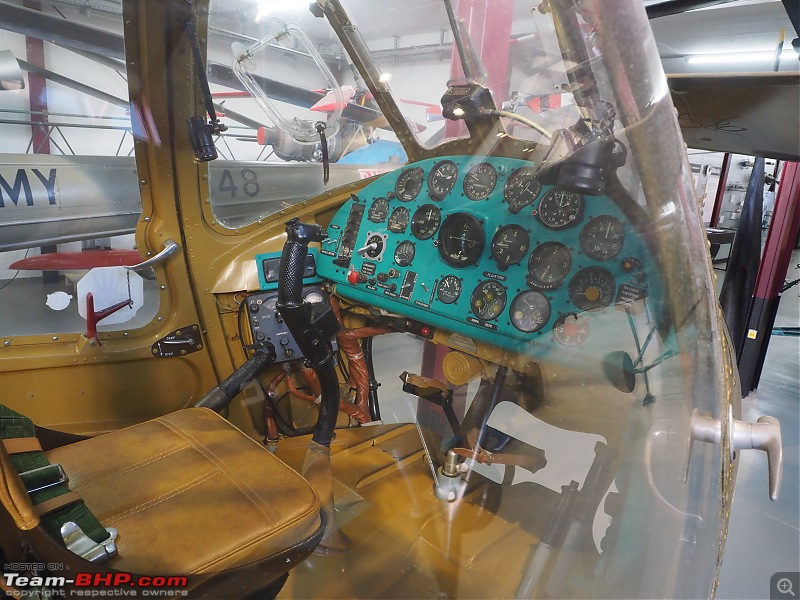 Another early 50s chopper, the Siemetzki ASRO-4 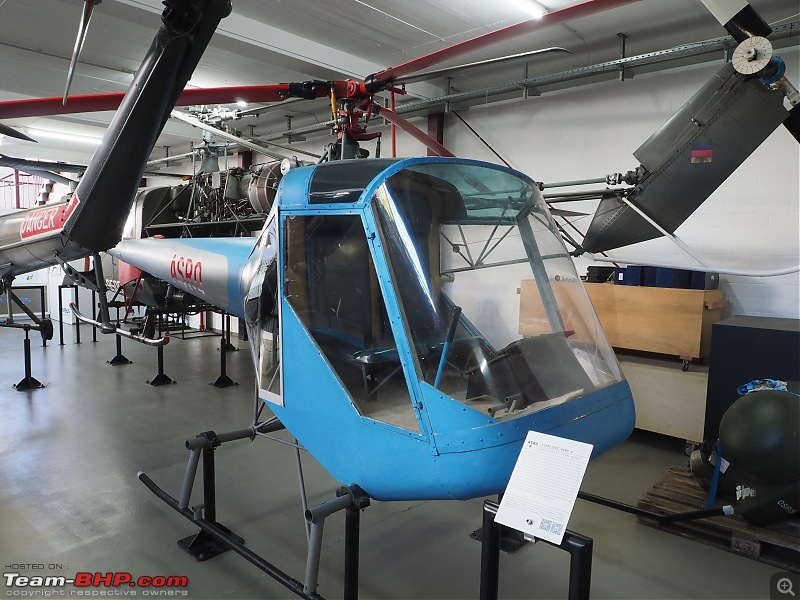 As per the models shown earlier, The Sikorsky S-58, H34 Choctaw. First flight in 1954. Piston eying, initially used for Anti Submarine Warfare (ASW) by the USA navy. It was also build under license by Westland Wessex, who stuck a turbine in. 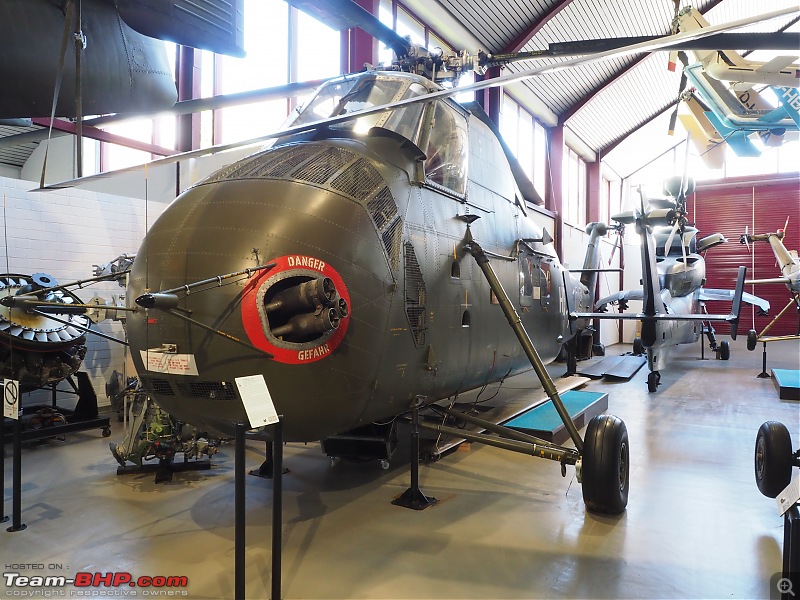 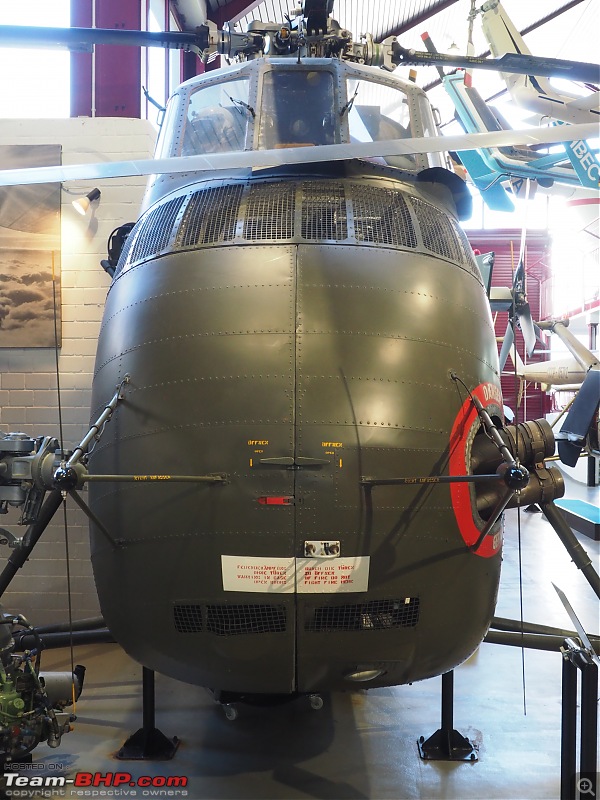 Some more nerdy bits to ponder over! 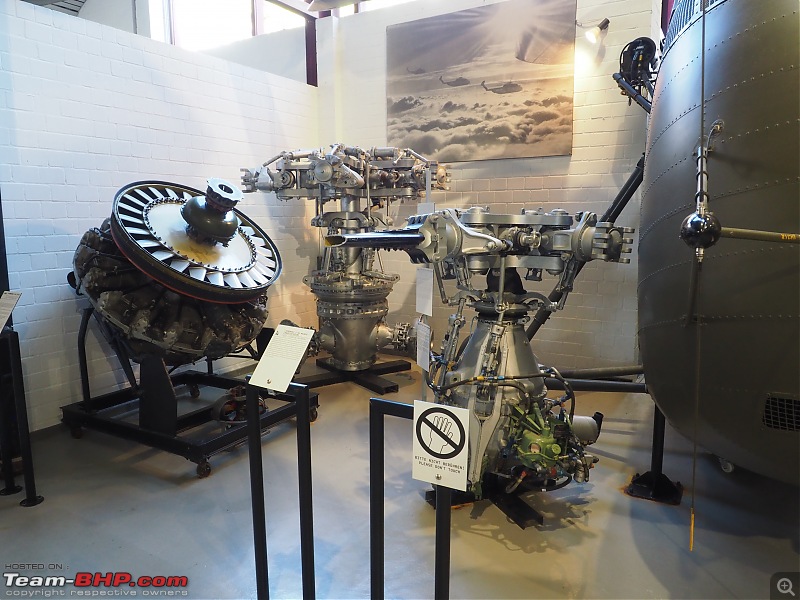 The Bristol B171. In the mid 50s, the German army bought some 50 of these Bristol B-171. Used mainly in Search and Rescue missions. (SAR) The display had a little text on it: “Die Briten komen”. The British are coming. 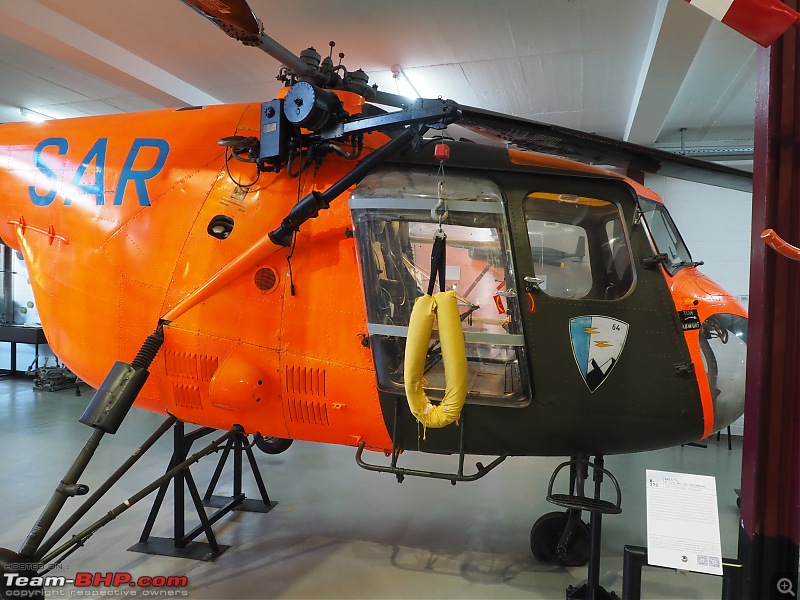 Commonly referred to as the Flying Banana, the Piaseck H-21. It turned out to be a true workhorse for the Americans. Remarkably though, it was originally developed by Piasecki as an Arctic rescue helicopter. The H-21 had cold-weather features permitting operation at temperatures as low as −54 °C and could be routinely maintained in severe cold weather environments. 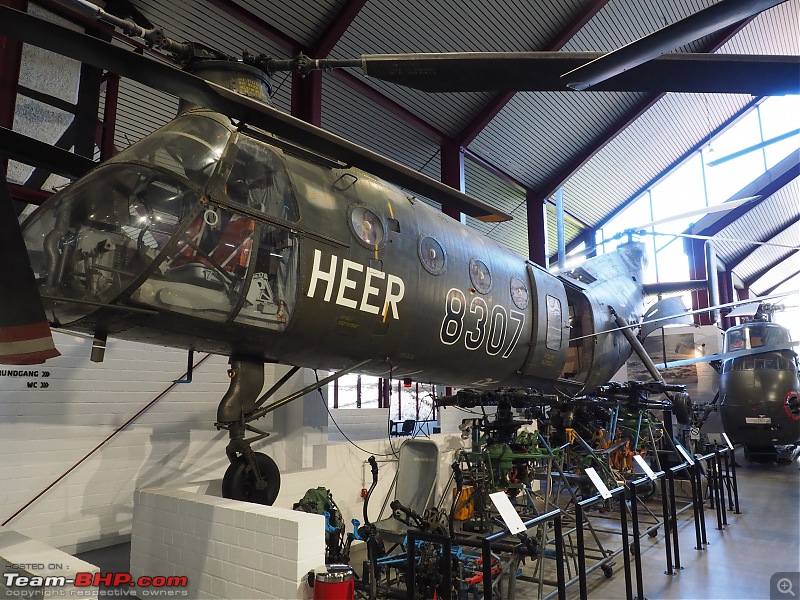 Underneath the helicopter, there is working 1:1 model on how the engine controls and transmission works. 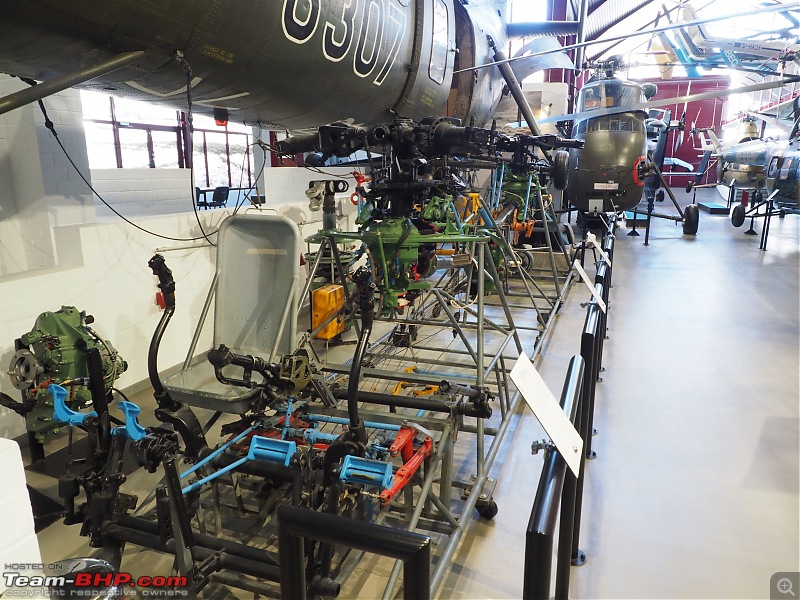 Back to my earlier fascination; The Kaman K-600 Huskie II. It has counter rotating intermessing rotor blades! This was supposed to solve the torque problem on regular helicopter design, which require a tail rotor to counter. When I was a little boy, our parents took us to Germany, usually somewhere along the Moezel, for our annual family holiday. I remember clearly seeing one of these, American, chopper overflying our little holiday bungalow. Every day they came across, hovered for a while, waiving at all the folks! 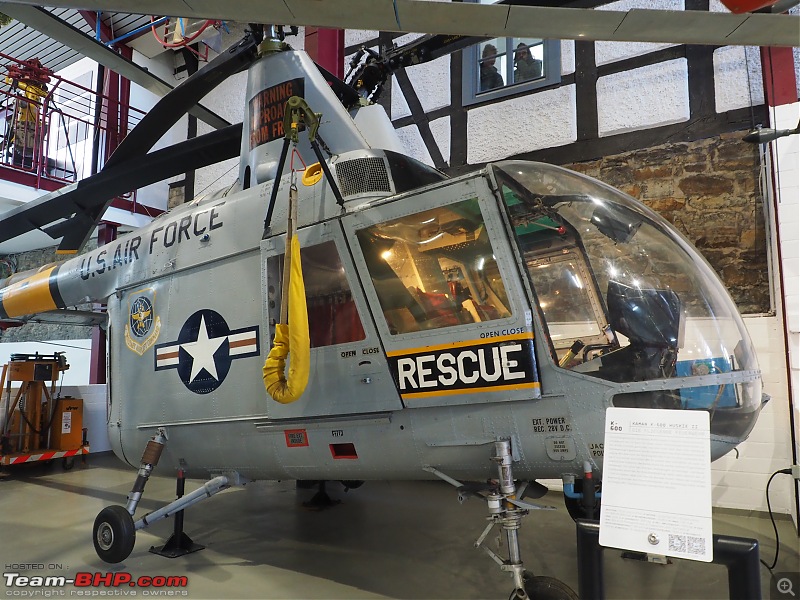 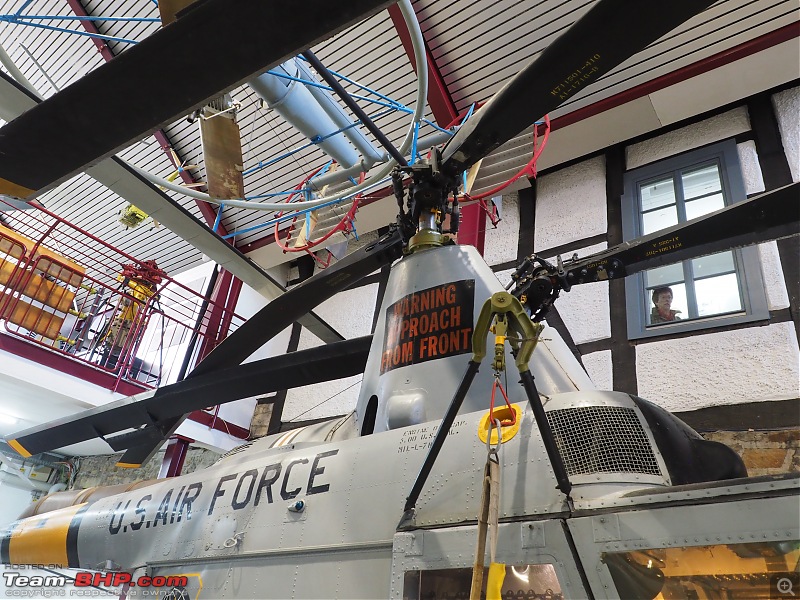 Another unusual helicopter design, the Kaman KA-26 Hoodlum. It is propelled by two, side mounted, co-axial rotors. These give a very special, relatively mild, type of rotor wash downwards. It is was used in Hungary for crop spraying due to its specific down wash characteristics. 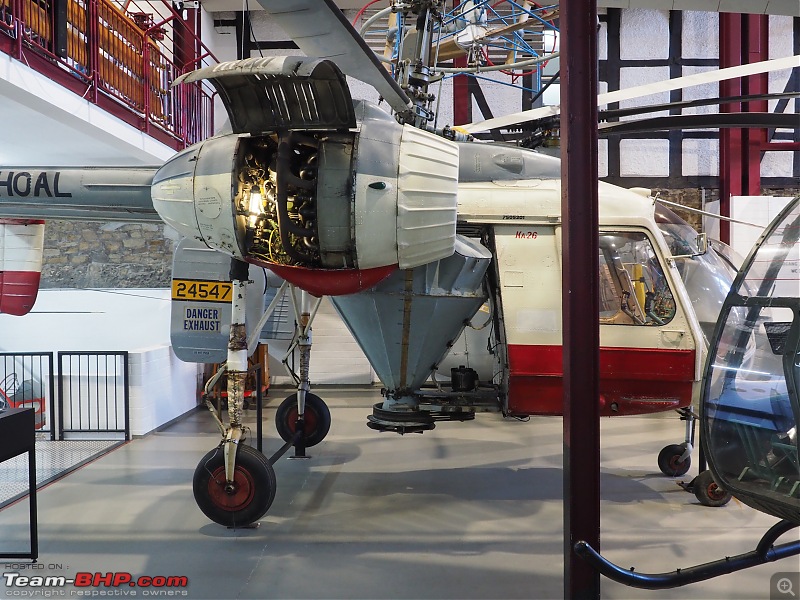 When you take a close up from the front, I swear, this chopper looks straight out of a Starwars movie!! 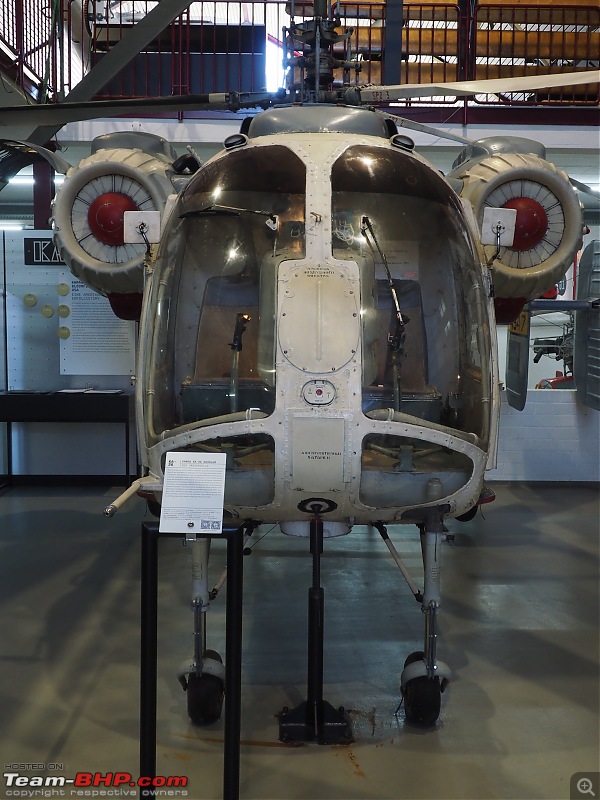 Overview of one of the exhibition halls 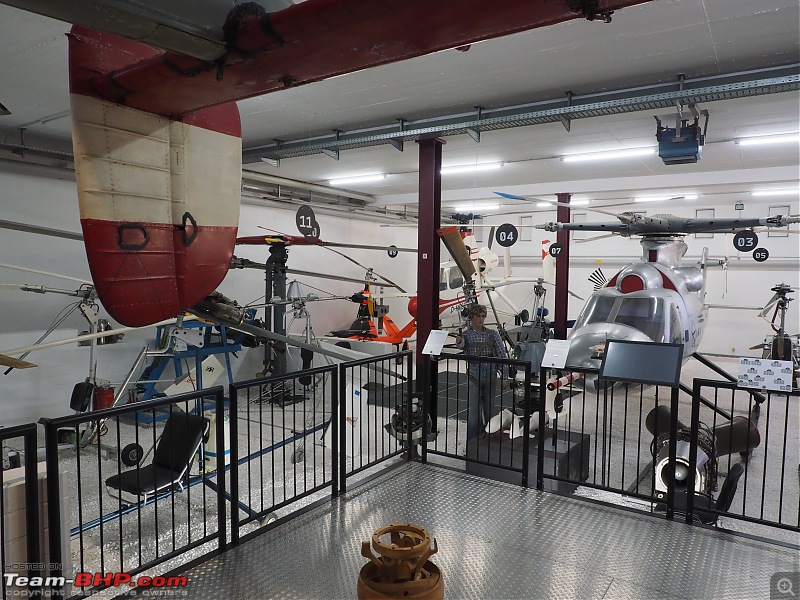 Last edited by Jeroen : 16th May 2023 at 14:46. |
| |  (11)
Thanks (11)
Thanks
 |
| The following 11 BHPians Thank Jeroen for this useful post: | darklord, dsnaveen21, GTO, keroo1099, raptor_diwan, Sen, skanchan95, sudipta, the_skyliner, Tucker48, V.Narayan |
| | #4 | |
| Distinguished - BHPian  | re: Helicopter Museum | Bückeburg, Germany Another innovative rotor design was the so called Derscmidt rotor systems. This is a Bölkow Bo 46, equipped with a Derschmidt rotor system. 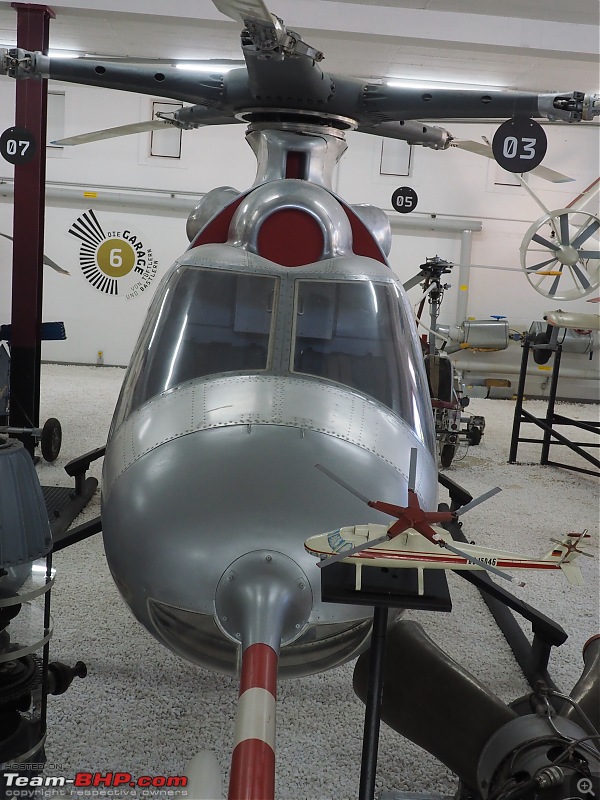 From Wikipedia Quote:
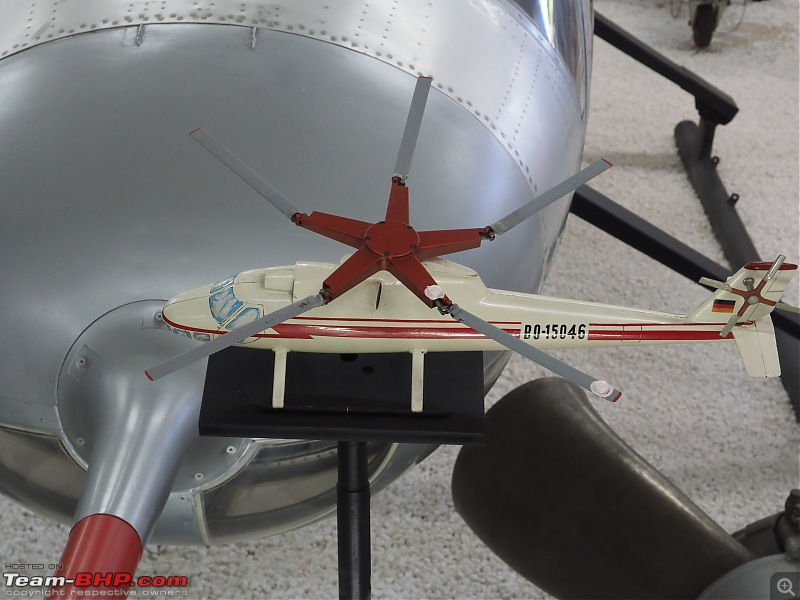 As so often, with these sort of complex mechanical solution, any gains were largely offsets by the added complexity, which gave rise you more complex and expensive productions, maintenance, reliability concerns etc. This is also were the main exhibition finishes. I walked back to the entrance, which held all the various models I showed earlier. I went up to the first floor, the so called “Voliere” and you can appreciate why! 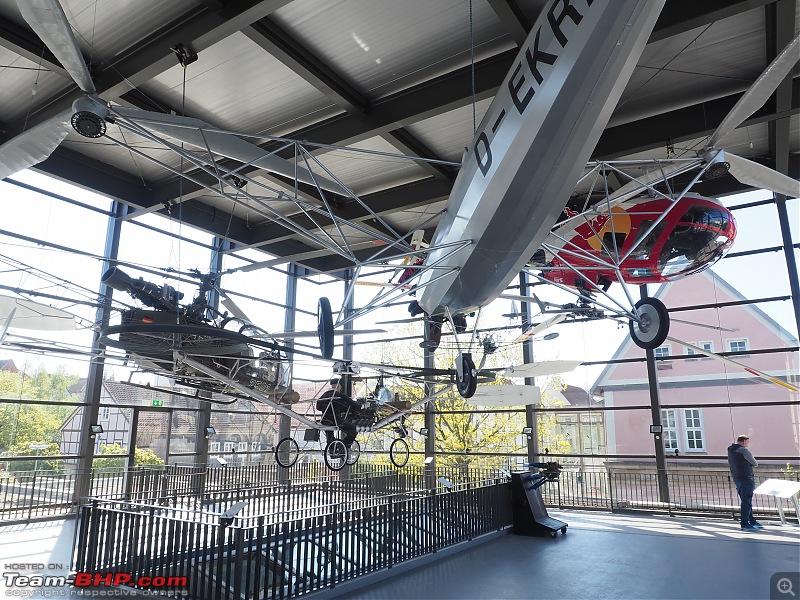 Here we have the Focke FW 61. Largely considered the very first practical functional helicopter. First flight in 1936!! 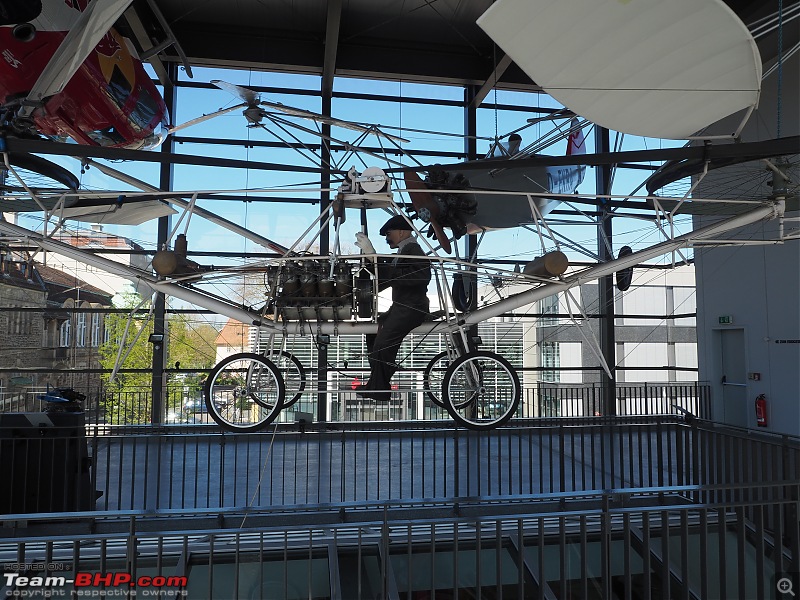 And you might have spotted this upside down Red Bull, A Bo 105. 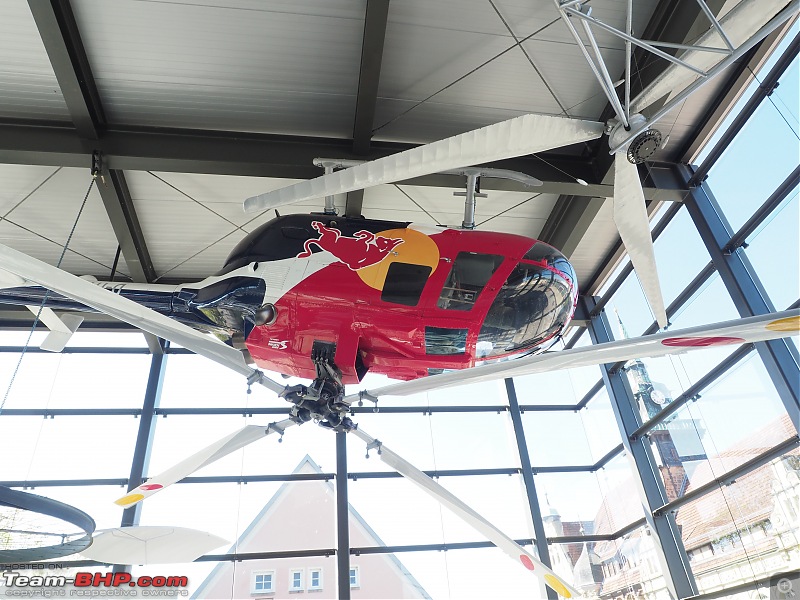 Does some amazing flying, have a look: Meanwhile Mrs. D was having a ball in Bad Nenndorf with her friends. 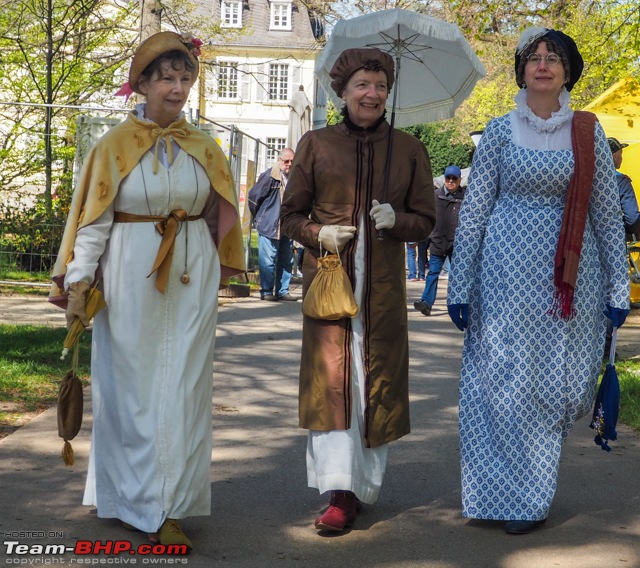 But just as I finished my tour of the helicopter museum I got a call from our son in law, Brian. Congratulating us on the birth of our new grand daughter Lucy Mae. Mother and daughter were doing fine. She was about a week early, no problem, but we were in Germany of course. So we got our stay short and barrelled home. Luckily I had just brought the best car for these sort of very fast on the Autobahn “going home to see the baby” car of my fleet. My Jaguar XJR. We touched 265 km/h here and there. 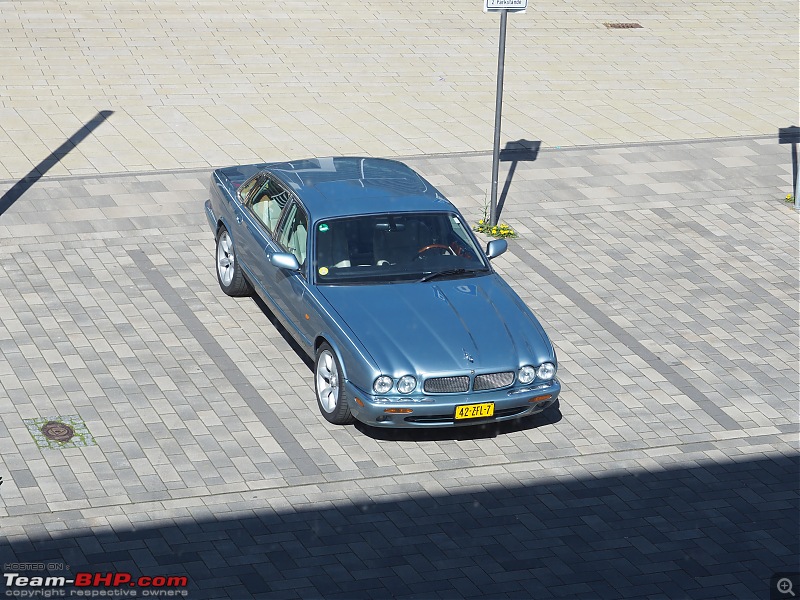 This museum is an absolute must see, for anybody interested in helicopters. Very well curated and an amazing collection Jeroen Last edited by Jeroen : 16th May 2023 at 15:13. | |
| |  (21)
Thanks (21)
Thanks
 |
| The following 21 BHPians Thank Jeroen for this useful post: | BlackBeard, black_rider, darklord, dexter78, dsnaveen21, GTO, Highh5, keroo1099, Maverick_4662, raptor_diwan, S5157, sainyamk95, sai_ace, Sen, skanchan95, sudipta, TejasV, the_skyliner, V.Narayan, Voodooblaster, W.A.G.7 |
| | #5 |
| Team-BHP Support  | re: Helicopter Museum | Bückeburg, Germany Thread moved out from the Assembly Line. Thanks for sharing! |
| |  (2)
Thanks (2)
Thanks
 |
| The following 2 BHPians Thank Aditya for this useful post: | GTO, V.Narayan |
| | #6 |
| Distinguished - BHPian  Join Date: Aug 2014 Location: Delhi-NCR
Posts: 4,071
Thanked: 64,345 Times
| re: Helicopter Museum | Bückeburg, Germany  Another masterpiece by our very own Flying Dutchman. By jove Jeroen you really took a lot of trouble to photograph the most interesting helicopters in there and give your brief explanation on each. We owe you a big round of applause for all these wonderful museum threads you are creating. May Mrs D's old time fashion programmes flourish further:-) . Hearty hearty congratulations on the arrival of your grandchild. What a blessing. Visit more museums, maybe there is a cause-effect there. :-) All, I'll confess I had never heard of the Bolkow 46 with its special rotors. Something new to learn every day. I'll make another honest confession <emoji blushing> helicopters fascinate me way more than aircraft <emoji scrambles for cover from the fixed wing nuts> After a long years of maintaining & operating helicopters I still can't fully understand how the bloody thing flies - it isn't supposed to - but the helicopter, like the bumble bee does not know it.  Other than straightline speed and range, which by definition a chopper lacks, the helicopter can do pretty much every other manouevre - fly straight, fly backwards, go up & down vertically, fly sideways. move its position on the ground {read small platform} by 3 metres, fly nap of the earth endlessly, hide behind tall trees, you name it. Other than straightline speed and range, which by definition a chopper lacks, the helicopter can do pretty much every other manouevre - fly straight, fly backwards, go up & down vertically, fly sideways. move its position on the ground {read small platform} by 3 metres, fly nap of the earth endlessly, hide behind tall trees, you name it.Jeroen has pictured some real rare master pieces of the helicopter world - .Focke FW61; Bolkow Bo46; Kamov Ka-26; Piaseck H-21; Hiller H-23 ; Bristol Rotodyne etc. With his permission I'll add a few more : 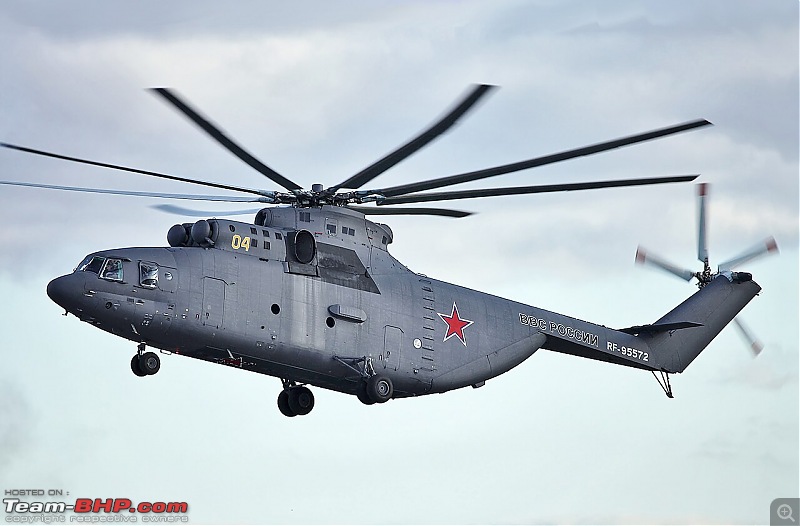 Mil Mi-26, the world's largest ever production helicopter with a payload lift of 20 tonnes - that is like the Lockheed C-130J or the Antonov An-12 at its upper loading limit. 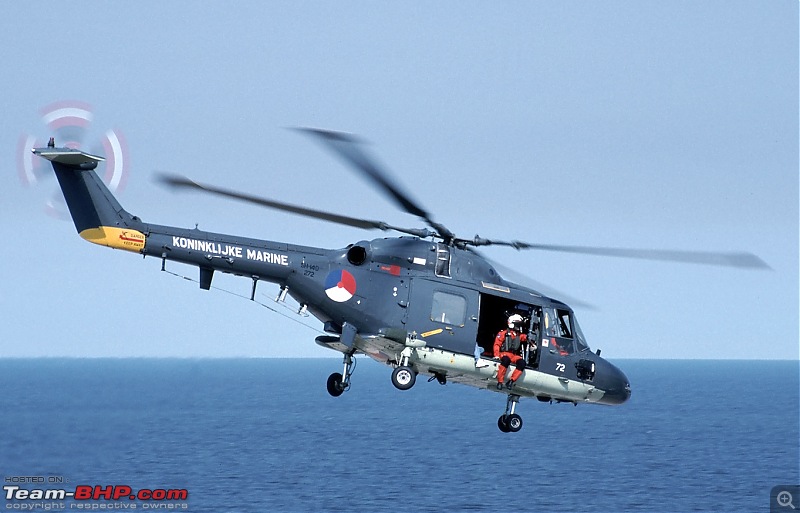 Fastest ever production helicopter - the Westland Lynx. Appropriately a photo of the Royal Netherlands Navy has been picked :-) . 324 kmph sustained or 175 knots. 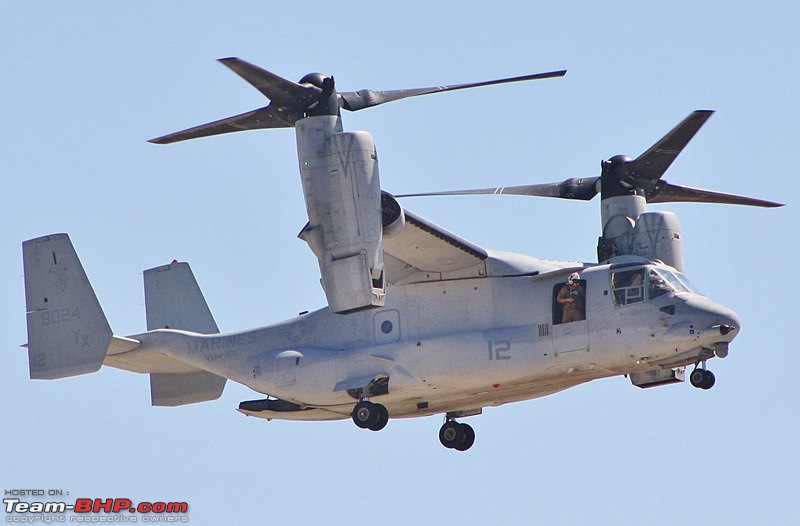 The Boeing Osprey V-22 tilt rotor - helicopter or aircraft? It can lift 9 tonnes , more than our An-32 and hit a top speed of 275 knots {a little over 500 kmph} that's like an ATR regional airliner. 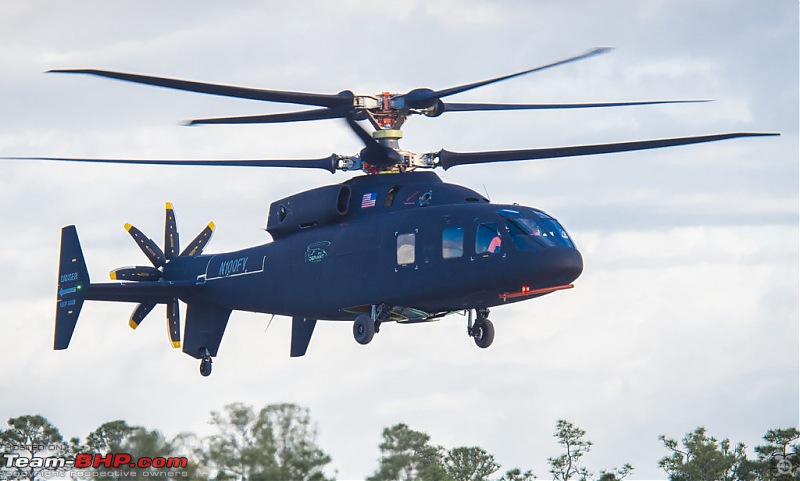 Boeing Sikorsky Defiant. The future. Contra rotating main rotors for lift and forward motion married to a pusher propeller for speed & range. Last edited by V.Narayan : 17th May 2023 at 07:39. |
| |  (11)
Thanks (11)
Thanks
 |
| The following 11 BHPians Thank V.Narayan for this useful post: | BlackBeard, carthick1000, dsnaveen21, Foxbat, Jeroen, raptor_diwan, sainyamk95, Sen, skanchan95, the_skyliner, Voodooblaster |
| | #7 |
| Distinguished - BHPian  | re: Helicopter Museum | Bückeburg, Germany
Absolutely, please add! Very fascinated by that last helicopter. I had never heard or seen Boeing Sikorsky Defiant before. On the Lynx: Between 1976 and 2012 (yes, that’s 36 years ....) Westland Lynx helicopters have flown more than 160,000 hours for Dutch Defense Forces. A total of 24 helicopters were bought in the seventees to perform land- and shipborne operations and they spent almost all of their service life with the ‘Marineluchtvaartdienst’ (Naval Air Service). The last flight with a Dutch Lynx helicopter took place on 11 September 2012. More importantly, 1,332 people were rescued during SAR missions and due to their equipment Lynxes were usually first on the spot when a natural disaster took place like floodings, hurricanes of famishes in Africa and the Caribbean. The Lynx helicopter also answered distress calls from the Dutch ‘Wadden’-isles when civilians needed urgent transportation to a hospital on the mainland. In 2008 during one of the recent defence restructurings the Marineluchtvaartdienst was dissolved into Dutch Helicopter Command (DHC) putting all Dutch rotary assets under a single command. These “Dutch” Lynxs had a permanent Homebase, DeKooy naval base, near Den Helder, which is the main home port for the Dutch navy. When assigned to ships (Frigate) they received a special flight name. E.g. the Pink Panther, Ninja etc. Currently the Dutch navy operates NH90 NFH 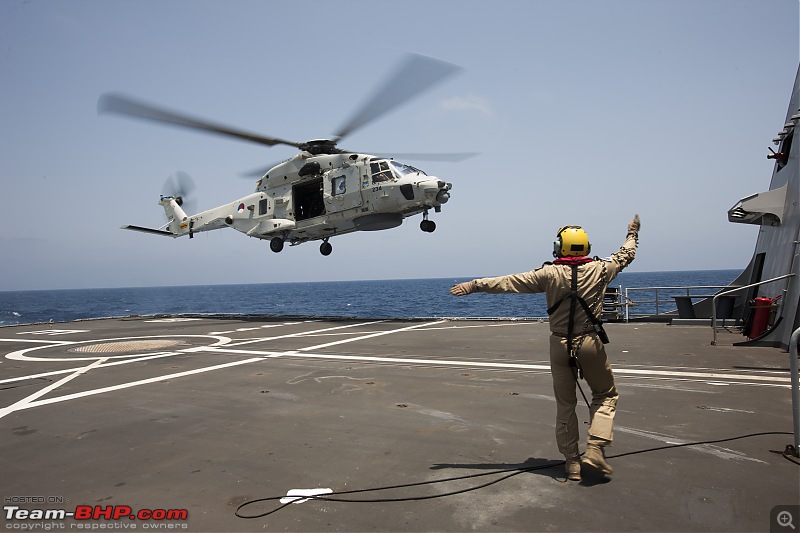 |
| |  (8)
Thanks (8)
Thanks
 |
| The following 8 BHPians Thank Jeroen for this useful post: | carthick1000, dsnaveen21, raptor_diwan, Sen, skanchan95, the_skyliner, V.Narayan, Voodooblaster |
| | #8 | |
| Senior - BHPian | Re: Helicopter Museum | Bückeburg, Germany Thank you for sharing the photos & the detailed report. It was a pleasure to read, as always. Quote:
Also, the German Tiger is not equipped with a cannon, unlike the Tigers in French, Spanish & Australian service.  The Australian Army was not very happy with their Tiger fleet. In 2021,after a very short period in service, the decision was made to replace the Tiger with the AH-64E in Australian Army service. Last edited by skanchan95 : 17th May 2023 at 10:40. | |
| |  (3)
Thanks (3)
Thanks
 |
| The following 3 BHPians Thank skanchan95 for this useful post: | Jeroen, raptor_diwan, V.Narayan |
| | #9 |
| BHPian Join Date: Dec 2019 Location: Dubai/Coorg
Posts: 104
Thanked: 254 Times
| Re: Helicopter Museum | Bückeburg, Germany Another smasher from Jeroen as always! Good read, thank you! |
| |  (2)
Thanks (2)
Thanks
 |
| The following 2 BHPians Thank wheeledwanderer for this useful post: | Jeroen, Sen |
| | #10 | ||
| Distinguished - BHPian  Join Date: Aug 2014 Location: Delhi-NCR
Posts: 4,071
Thanked: 64,345 Times
| Re: Helicopter Museum | Bückeburg, Germany Quote: Quote:
and also Thoughts on Eurocopter Tiger vs Apache. Thanks. | ||
| |  (1)
Thanks (1)
Thanks
 |
| The following BHPian Thanks V.Narayan for this useful post: | Jeroen |
 |


